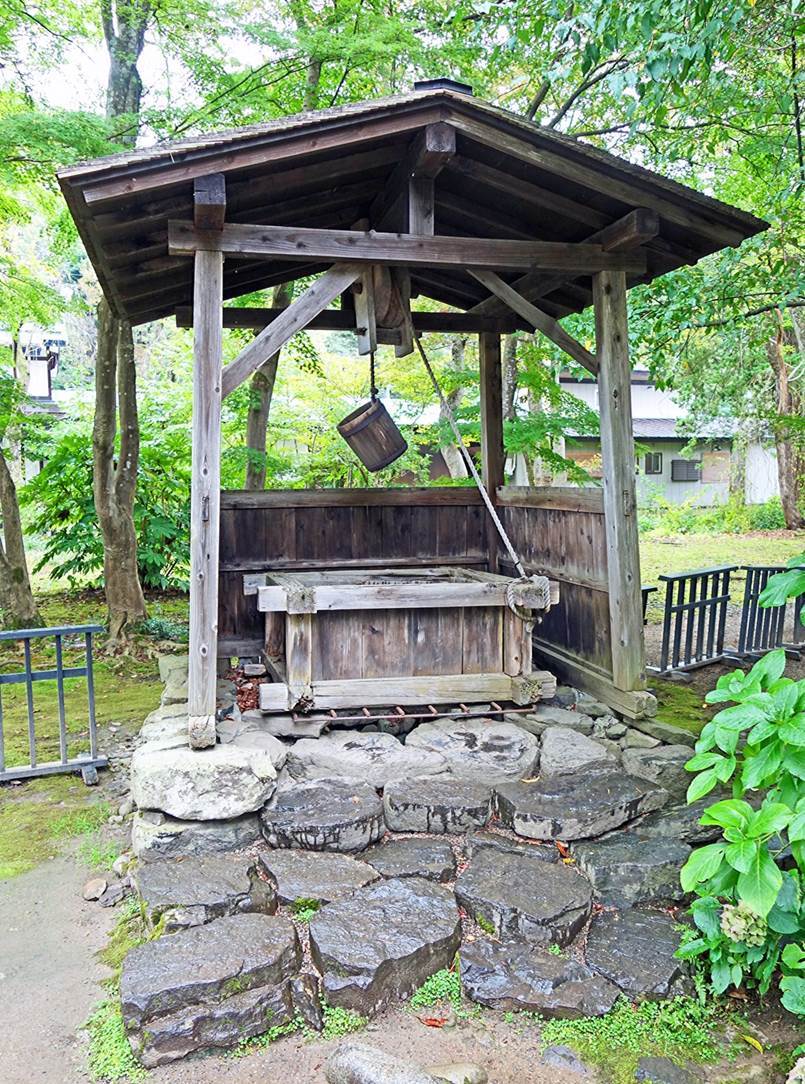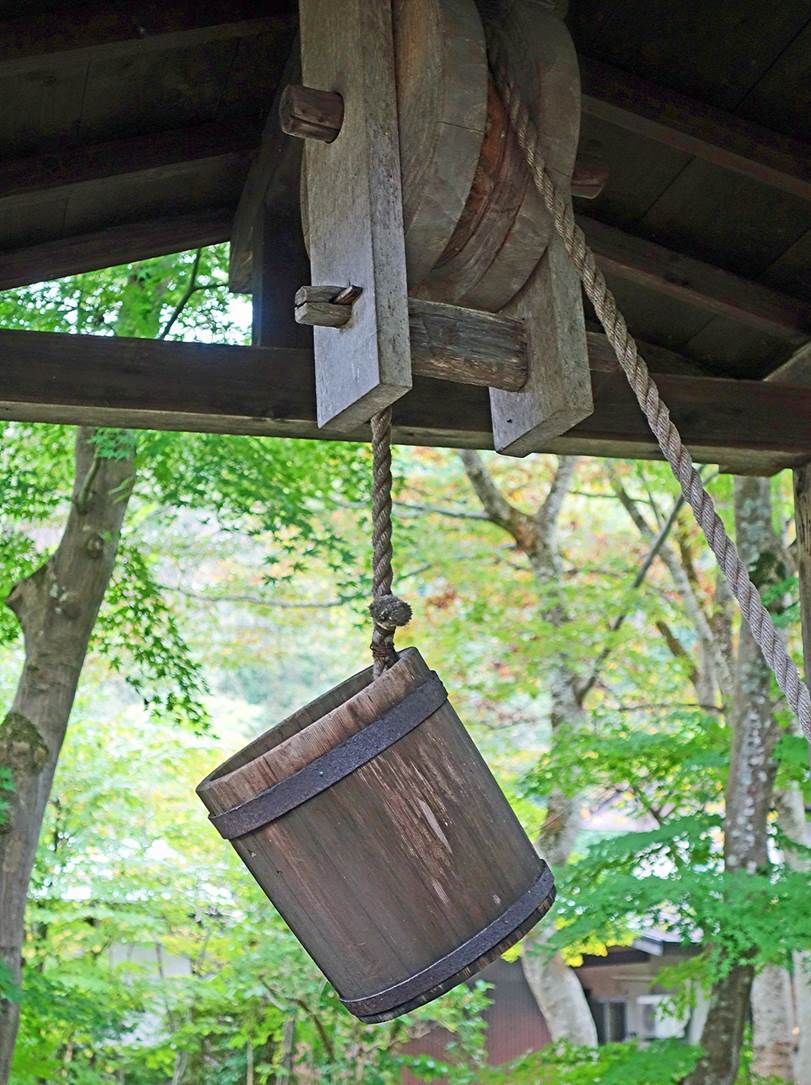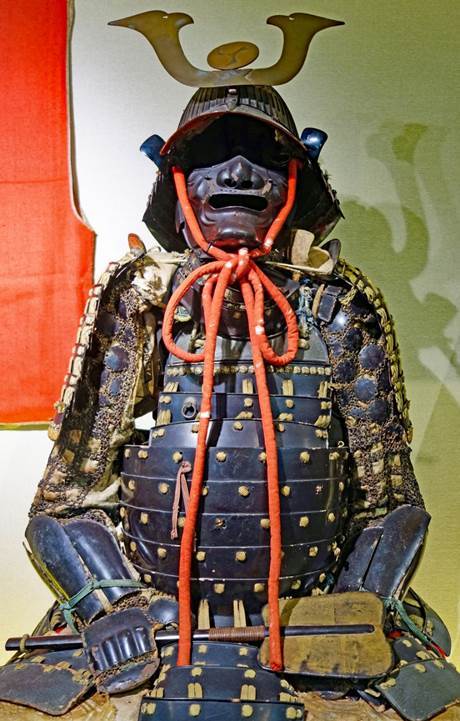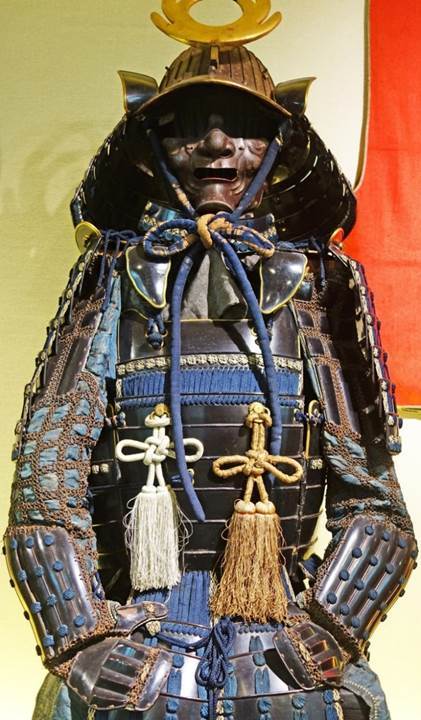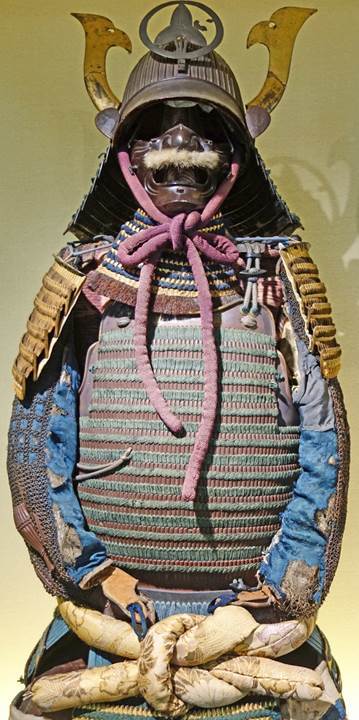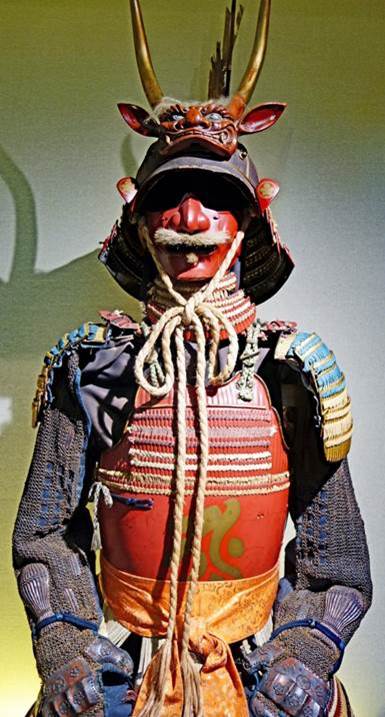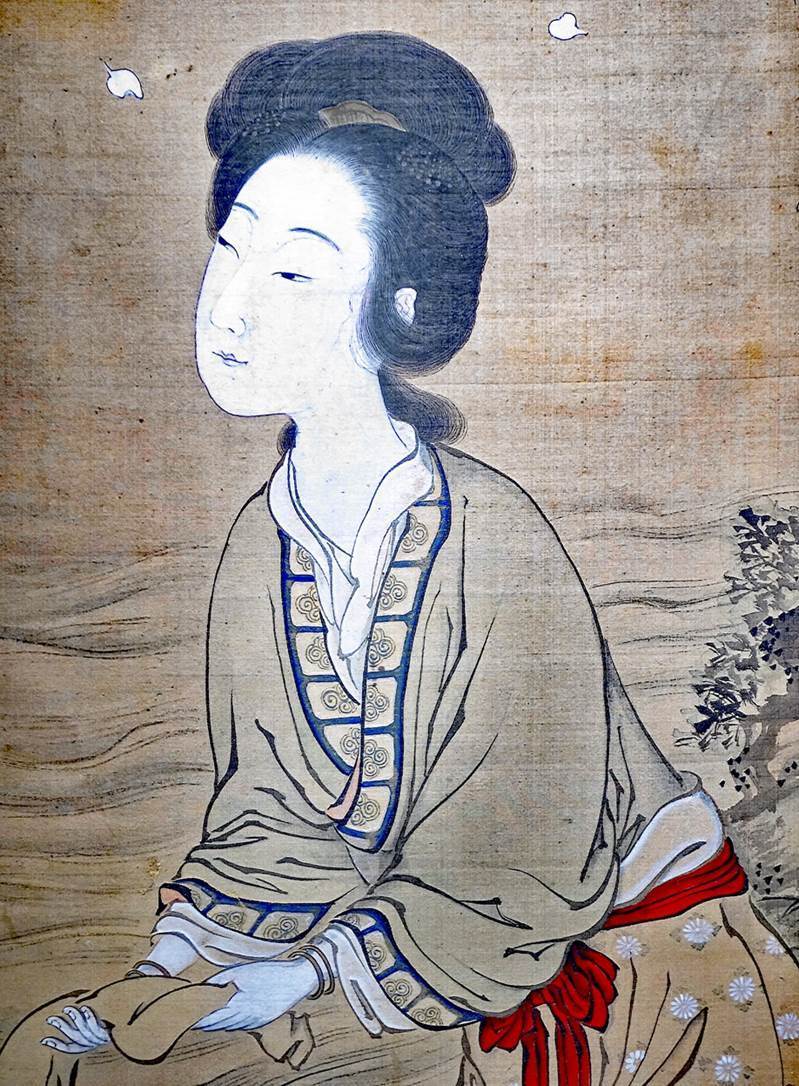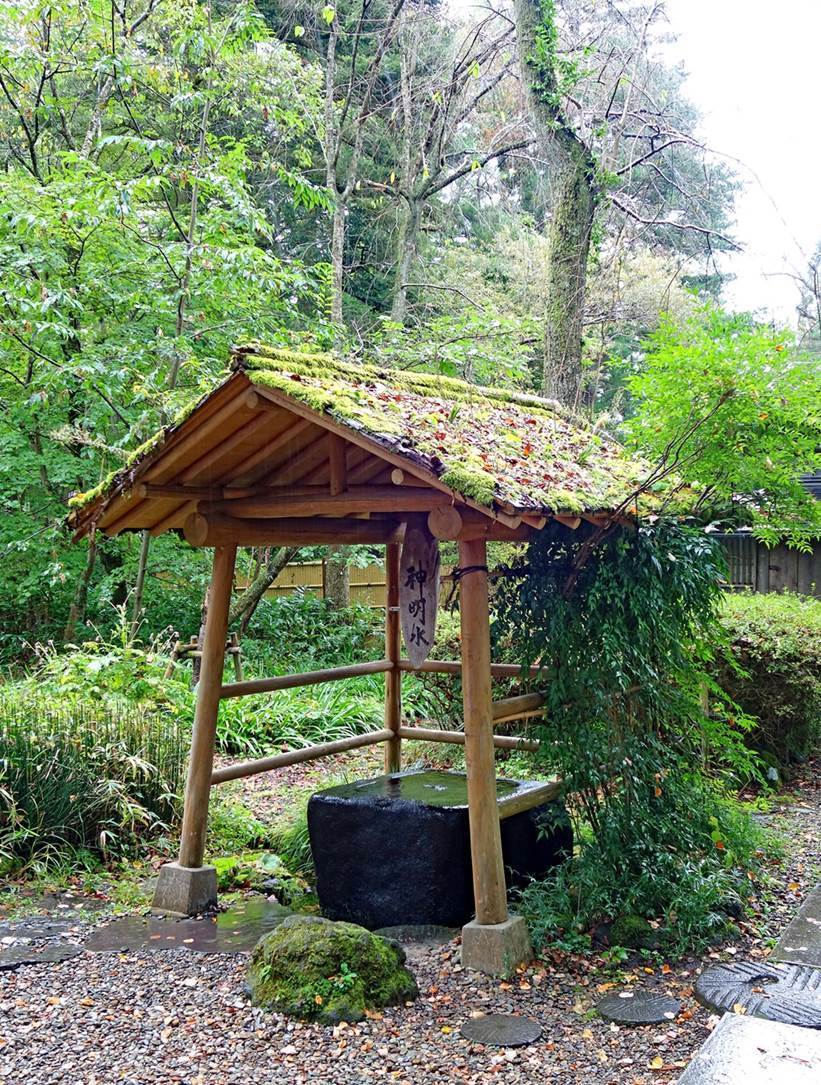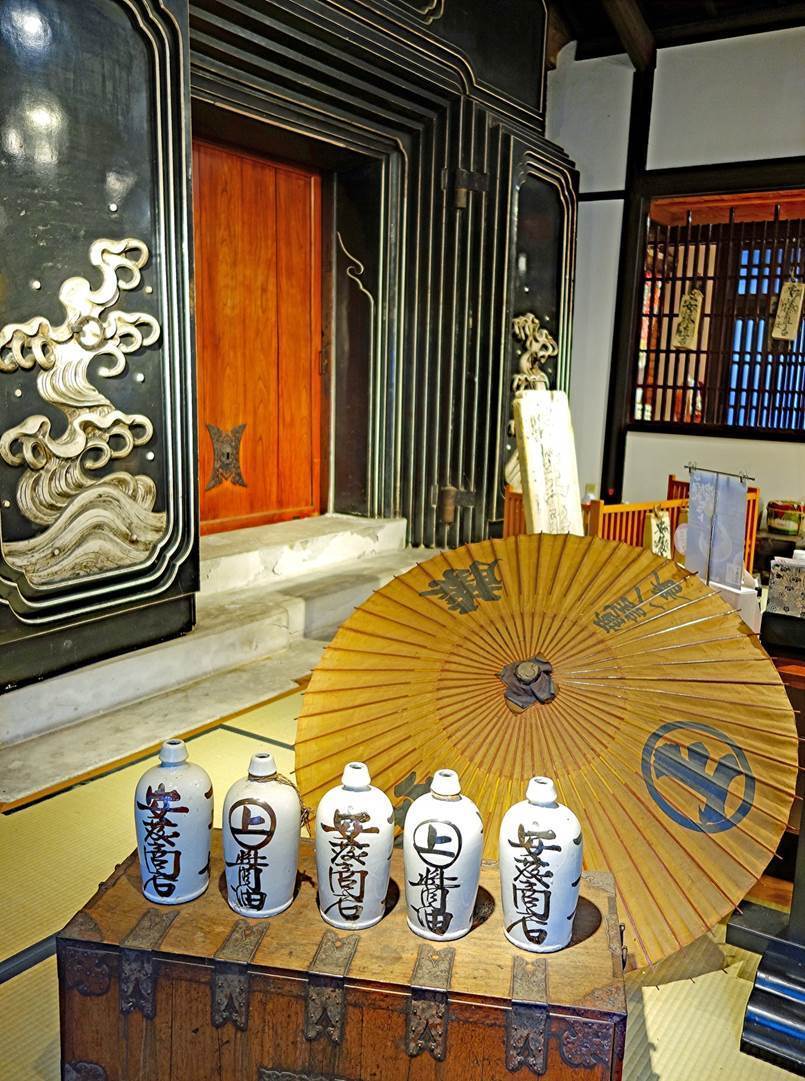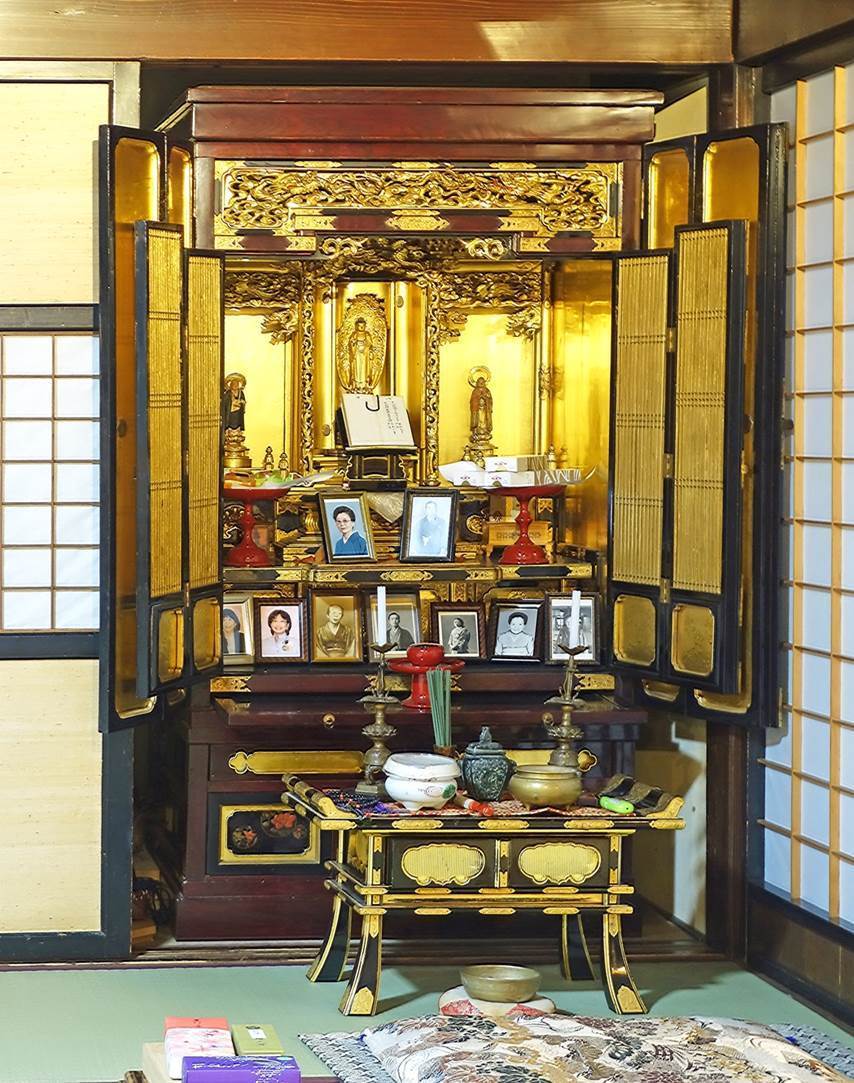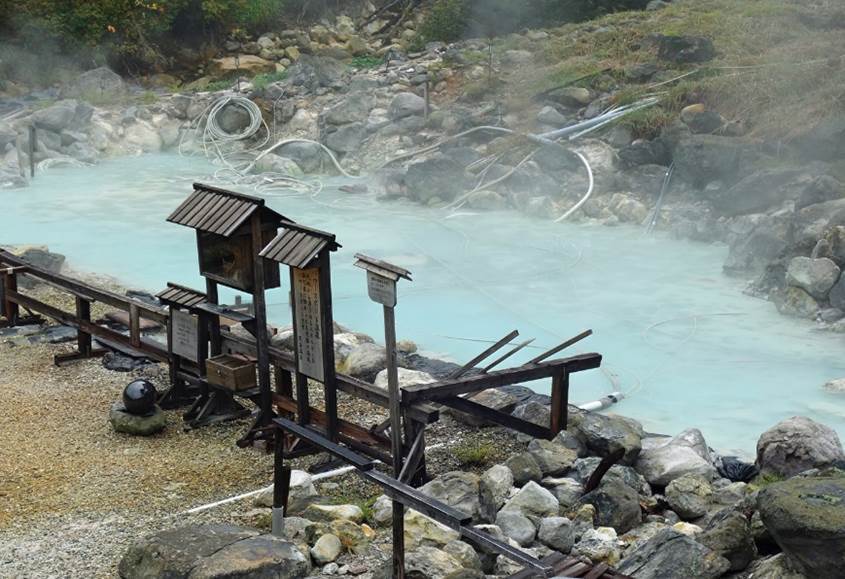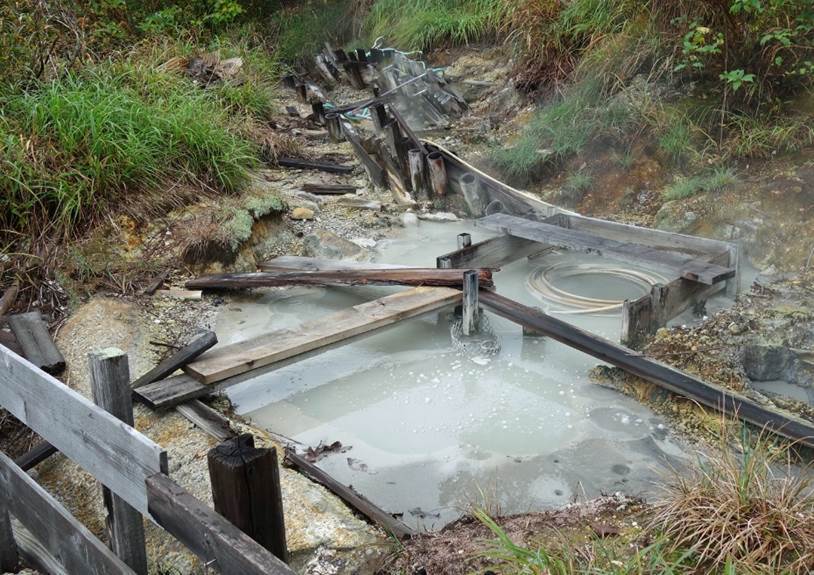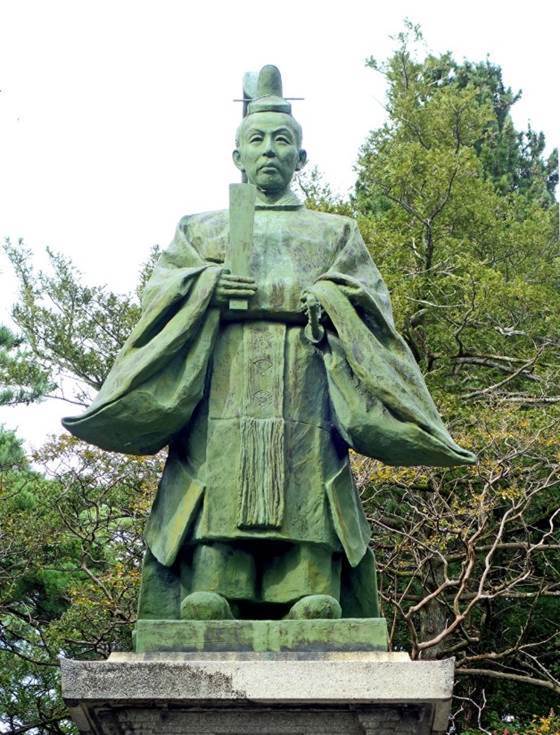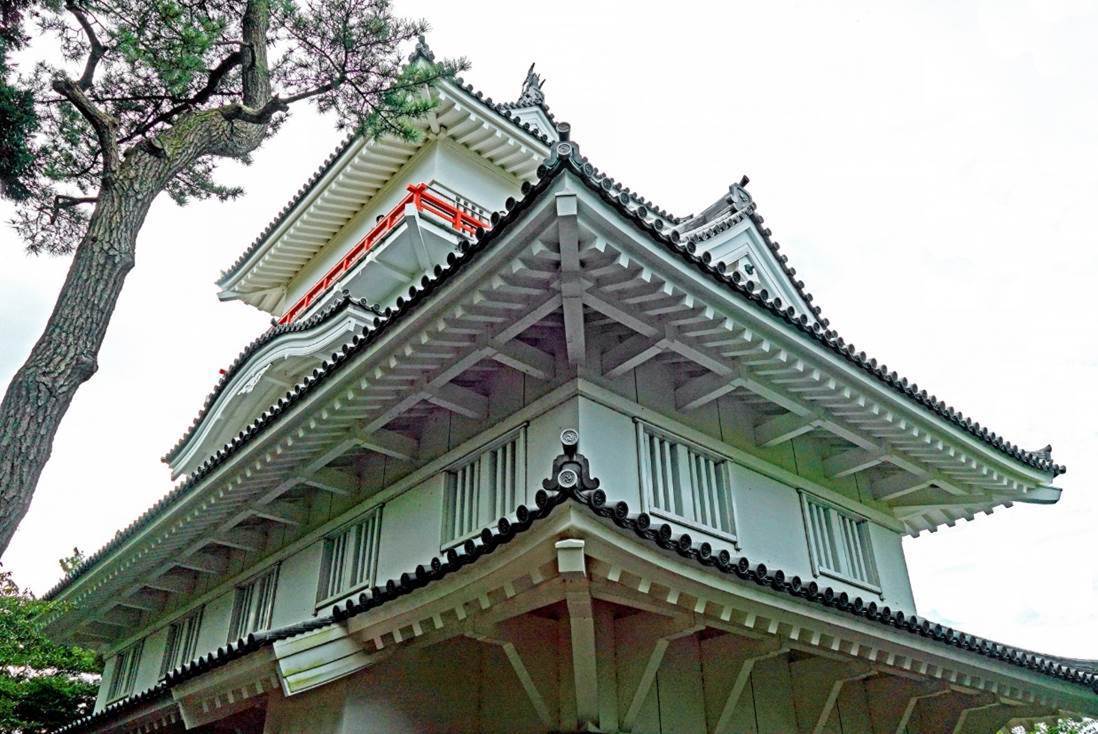Kakunodate, Kuroyu onsen, and Akita
Northwestern Honshu, Japan (October
2024)
![]()
Back to main Japan October 2024 page
|
|
|
Throughout the
Edo period, Akita was the capital of the Kubota domain ruled by the Satake clan
and Kakunodate was part of this domain. Prior to this period, the Satake clan
was ruling a larger and wealthier domain in western Honshu. But in 1600, at the
time of the battle of Sekigahara, the head of the clan, Satake Yoshinobu (1570-1633), tried to remain neutral. After
the victory of Tokugawa Ieyasu, the clan was punished and ordered to surrender
their ancestral domain for a smaller domain, the Kubota domain (part of
present-day Akita prefecture) in northeastern Honshu. Yoshinobu arrived in his
new domain in 1602 and immediately started building a castle (the Kubota
castle) and a town around it that became his capital, Akita. The Sakate clan
ruled this domain during the entire Edo period, until the Meiji restoration in
1868. The Kubota domain became somewhat uncommon: in addition to the castle
built in Akita, it had two other major castles and several fortified estates,
including Kakunodate, each administered by a senior retainer as his small
castle town.
Kakunodate
Located 50km
southeast of Akita, Kakunodate was founded in 1620 by Ashina Yoshikatsu. It
grew into a samurai stronghold with up to 80 samurai families. Today, its
former samurai district is one of the best-preserved ensembles of samurai
residences in Japan. Kakunodate is also a very pleasant small town, with some
other interesting sights.
Samurai
district.
Most residences
are beautiful wooden houses with thatched roofs, surrounded by gardens planted
with ancient trees, enclosed behind high wooden walls, and accessible through
traditional gates.



Gate of the
Ishigoro house.
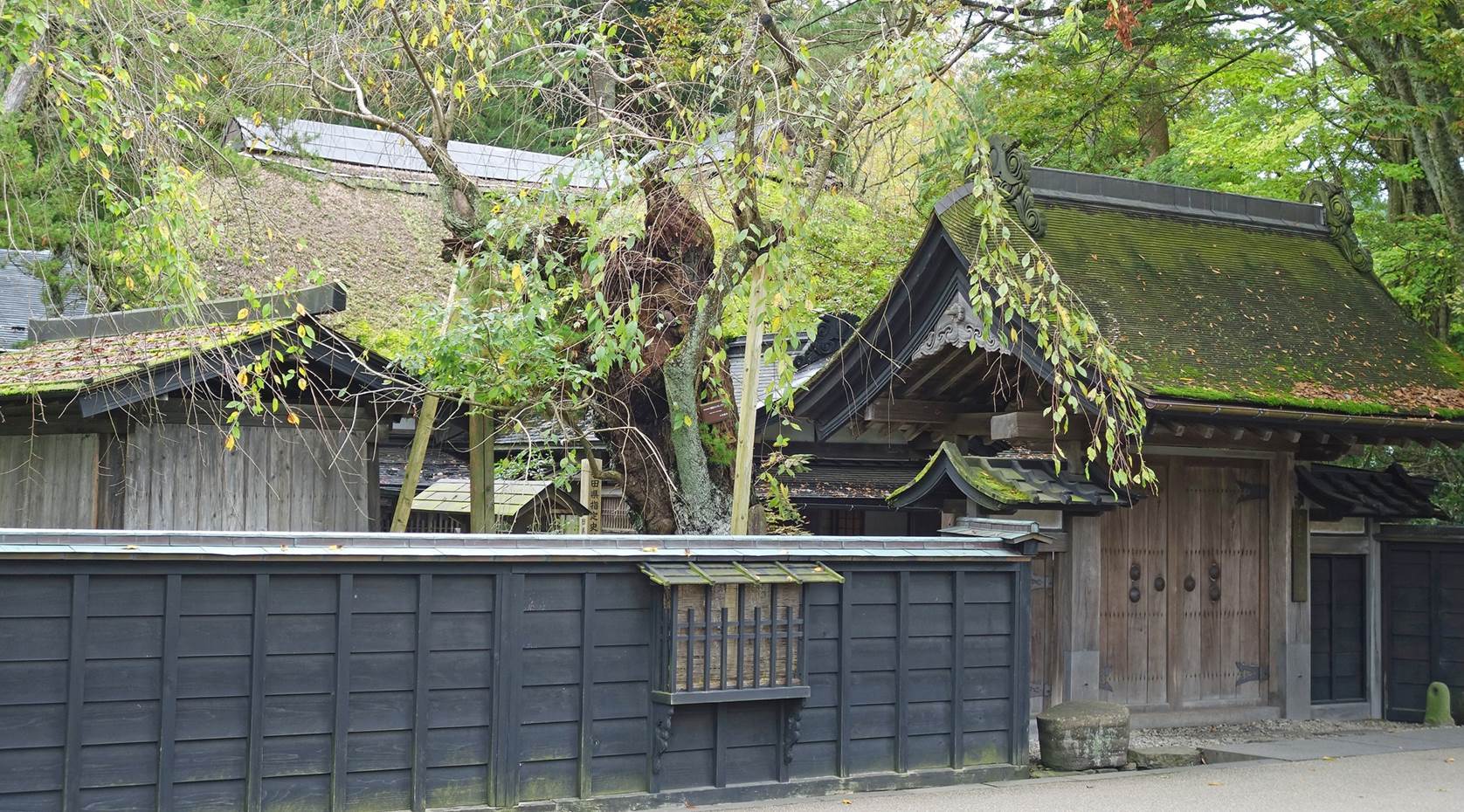
Gate of the
Aoyagi house.
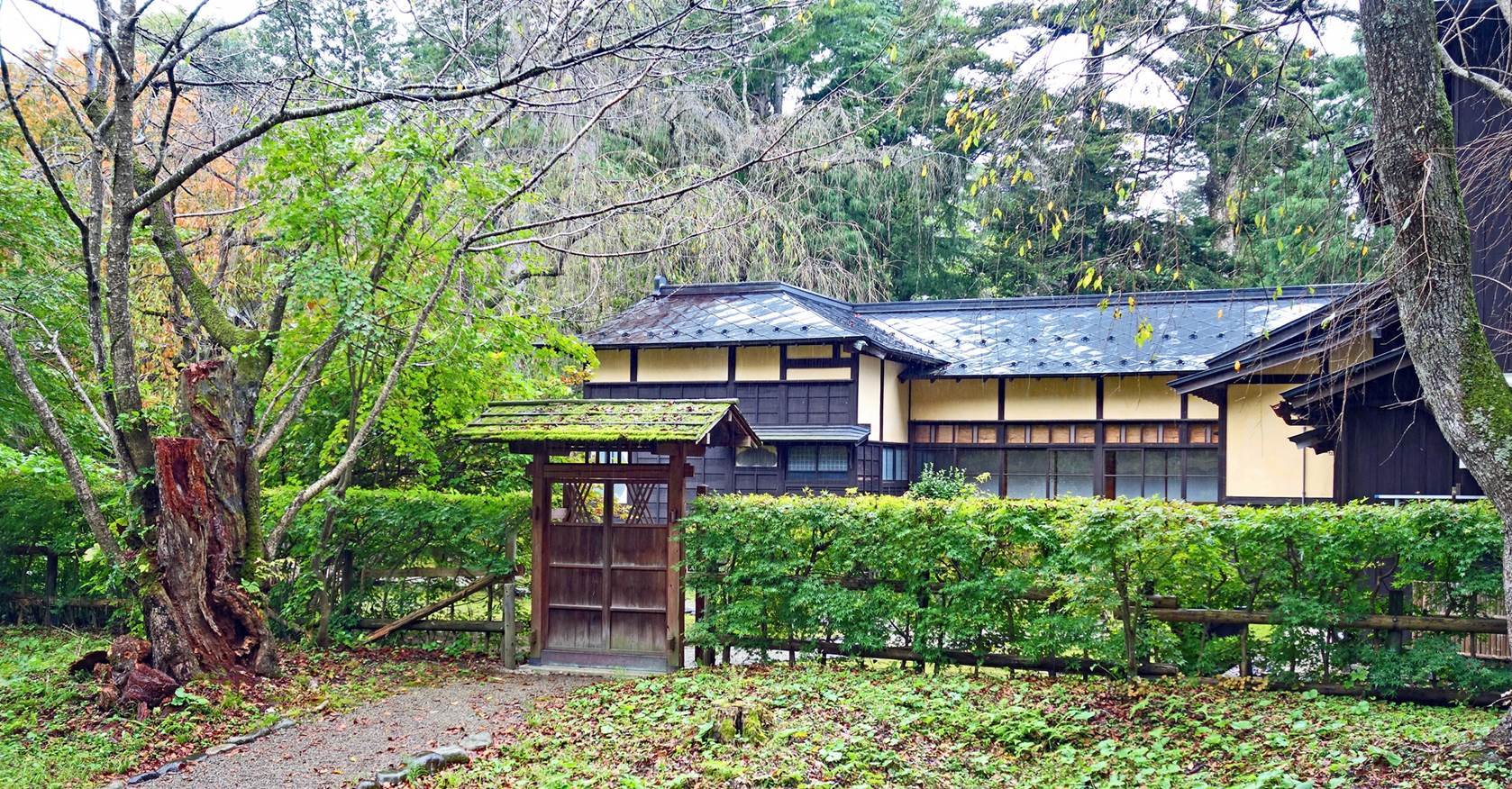
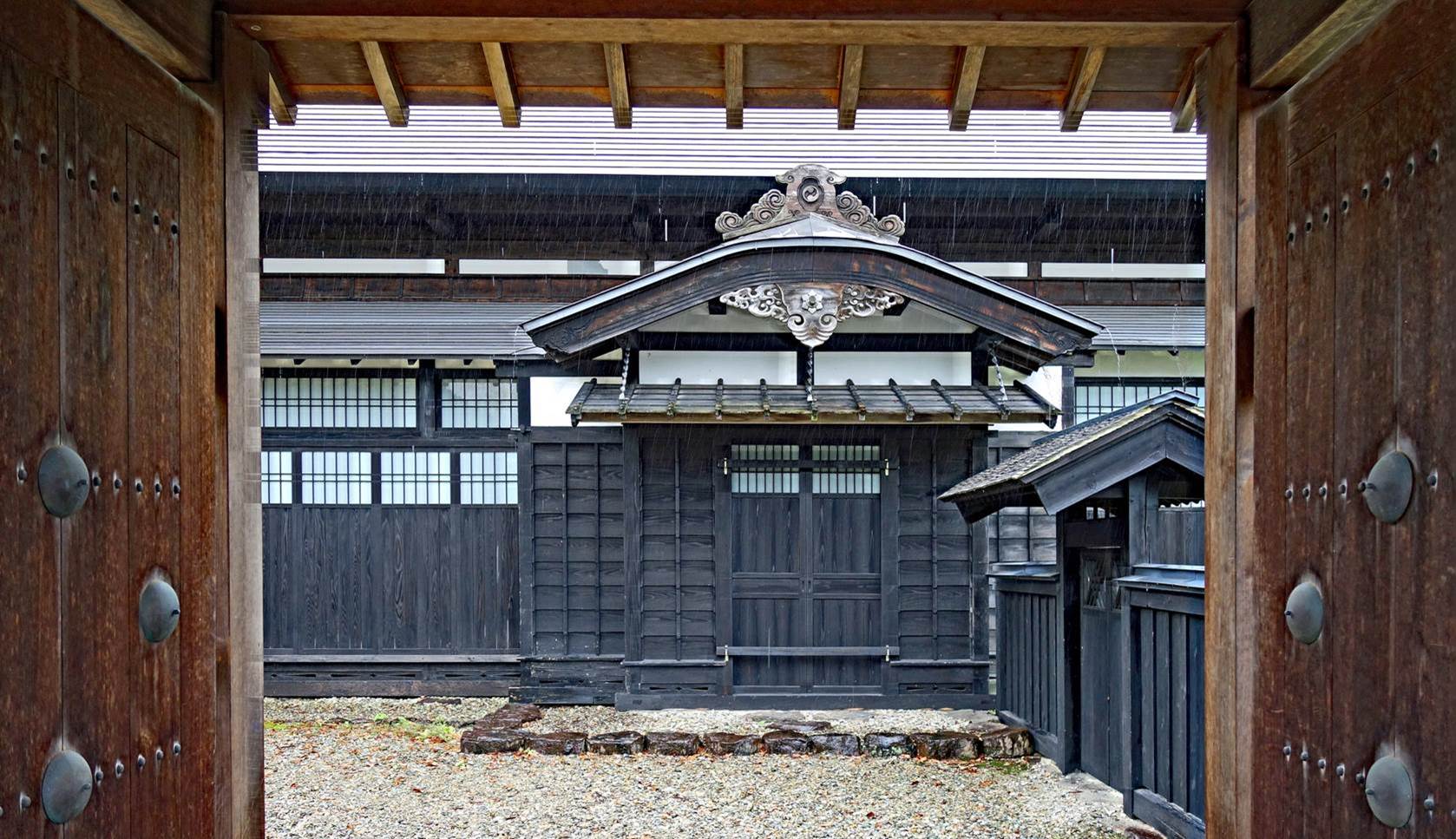
The Iwahashi
house:
- Entrance.
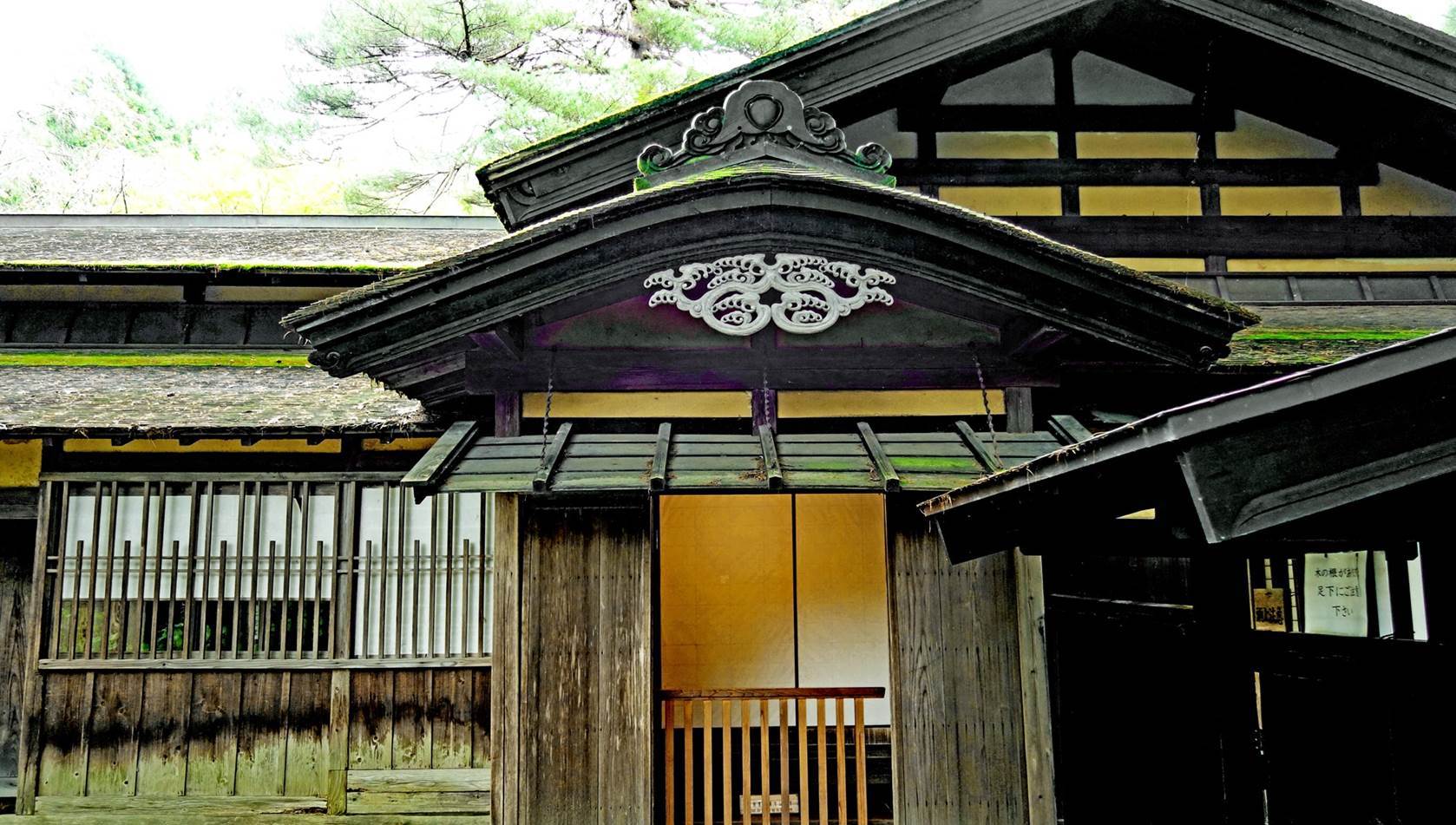
- House and
garden.

- Interior of
the house.

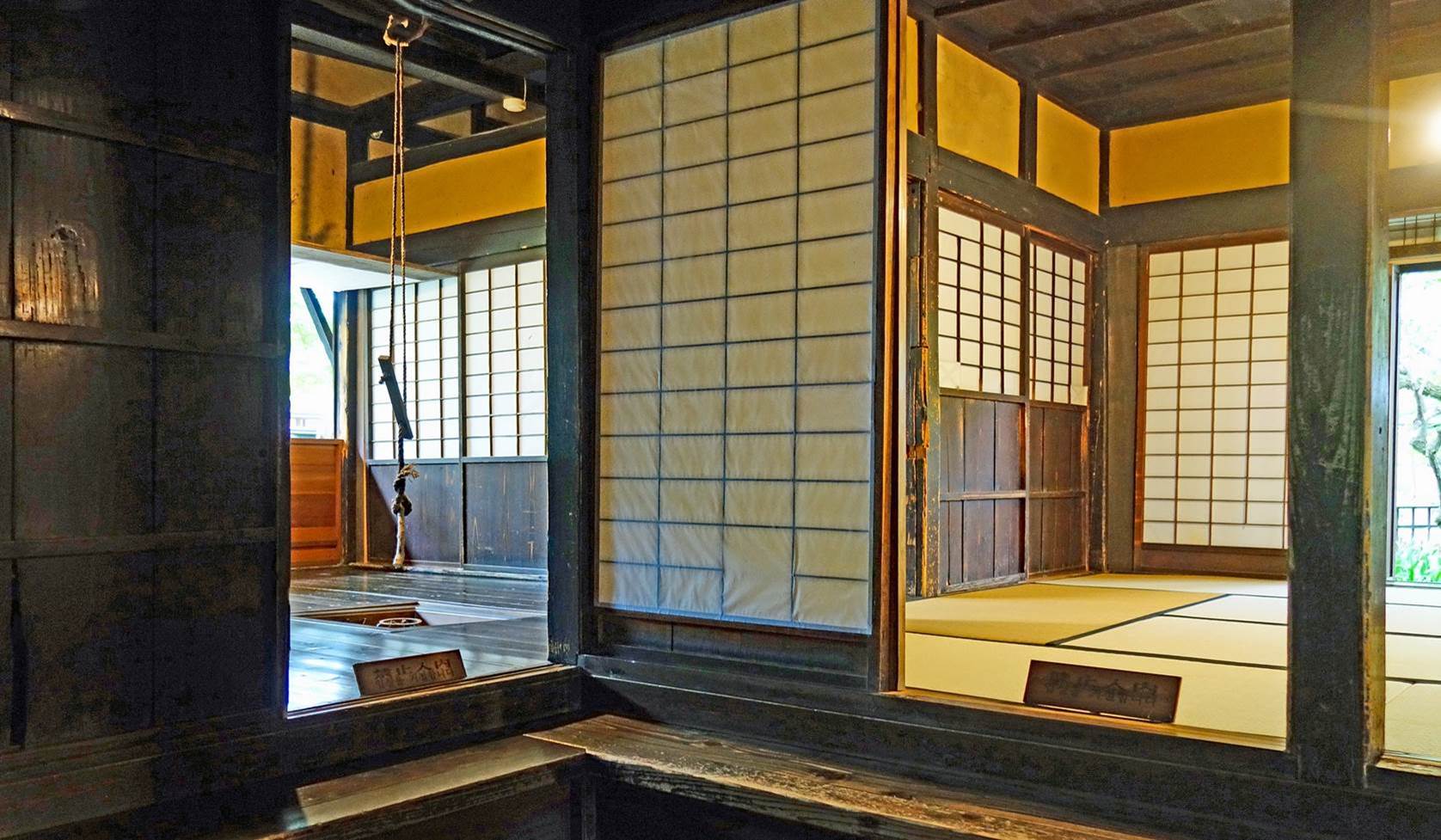
- Well
located behind the house in the back of the garden. (Every residence had its
own well.)
|
|
|
The Aoyagi
house:
- Entrance.
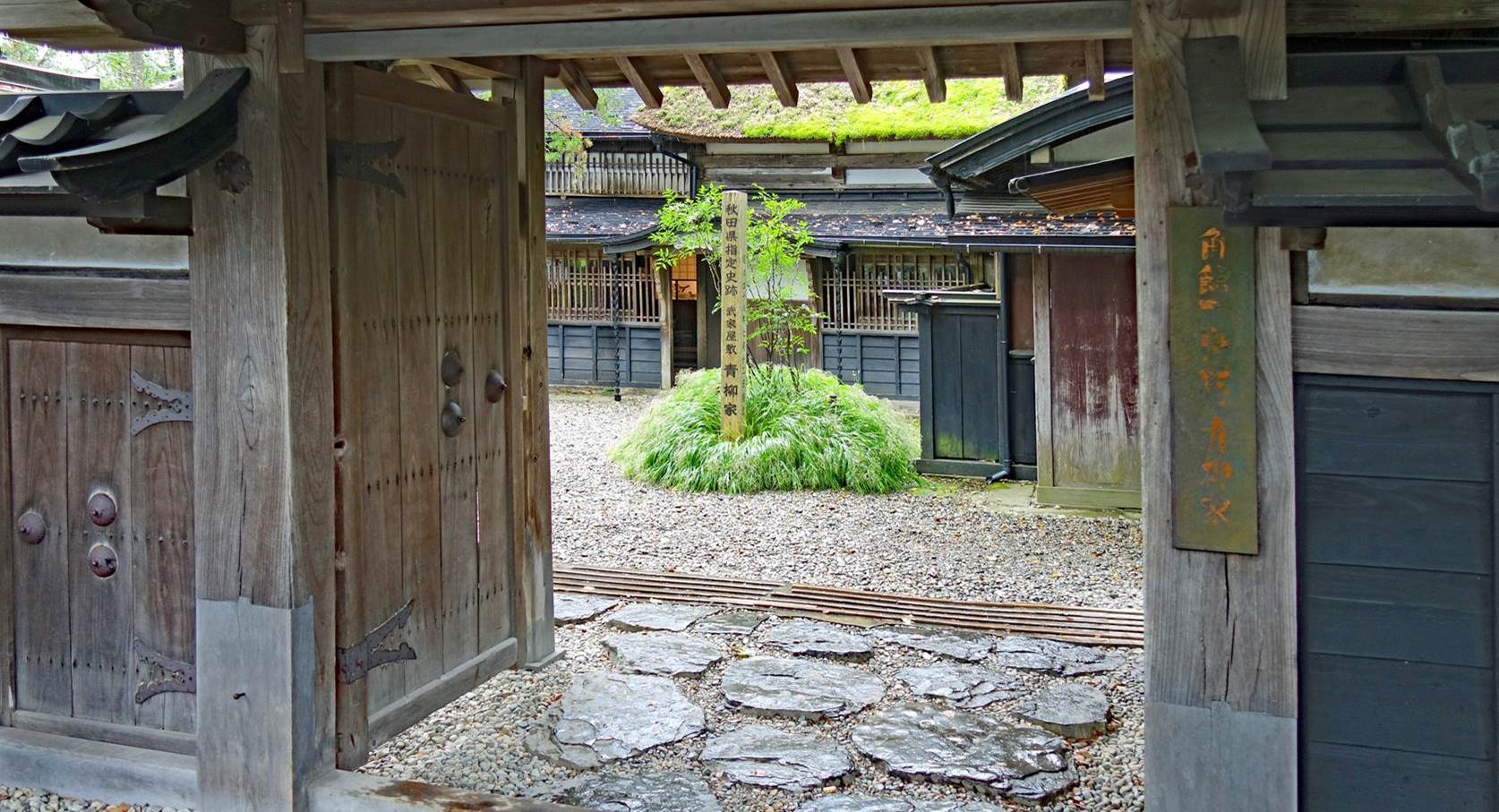
- In the
kitchen.
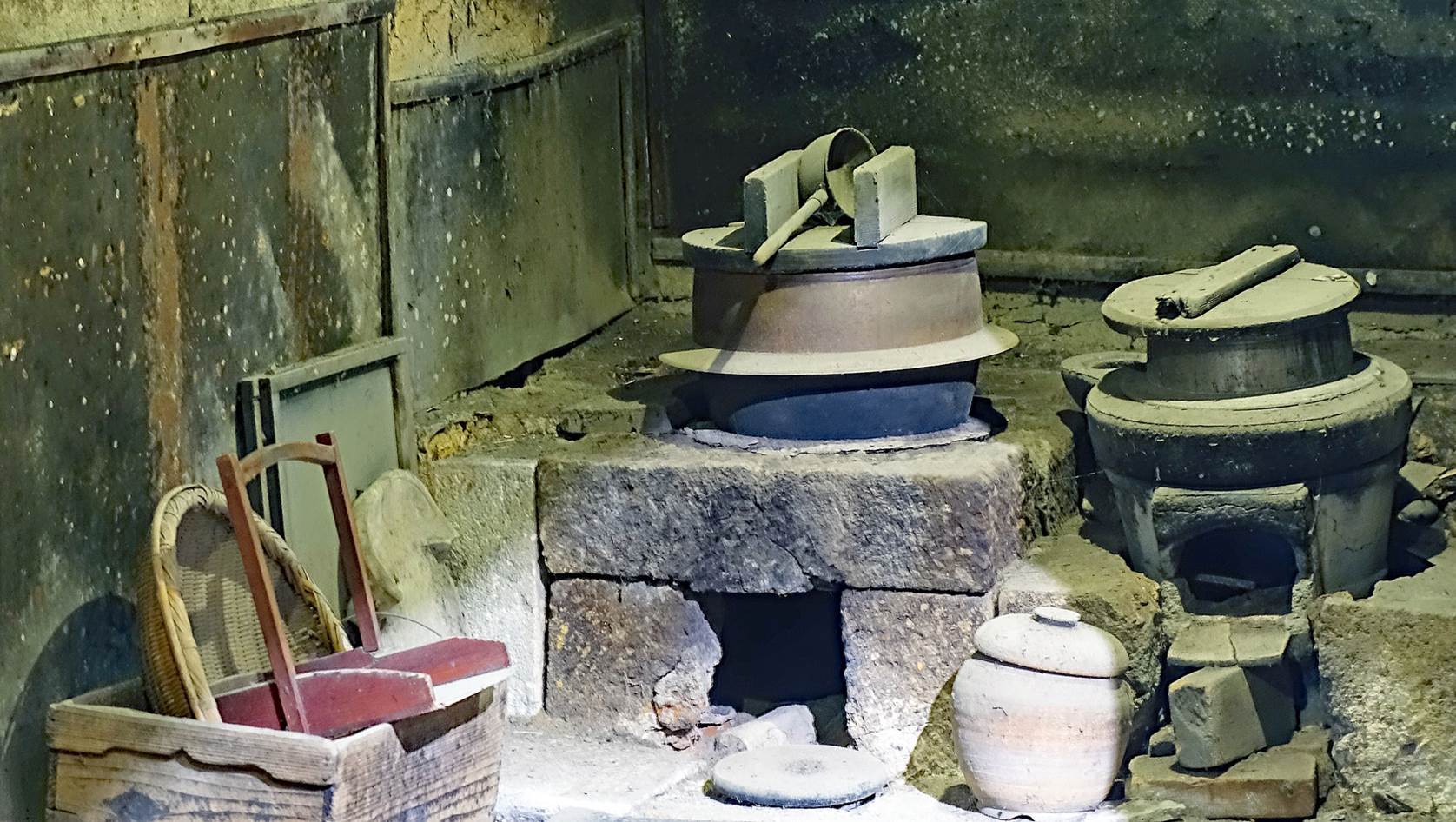
- Display of samurai armors in the house.
|
|
|
|
|
- Left: Painting of a woman in the house. Right: Stone water basin under
a roof in the garden.
|
|
|
- Part of the large residence's garden.
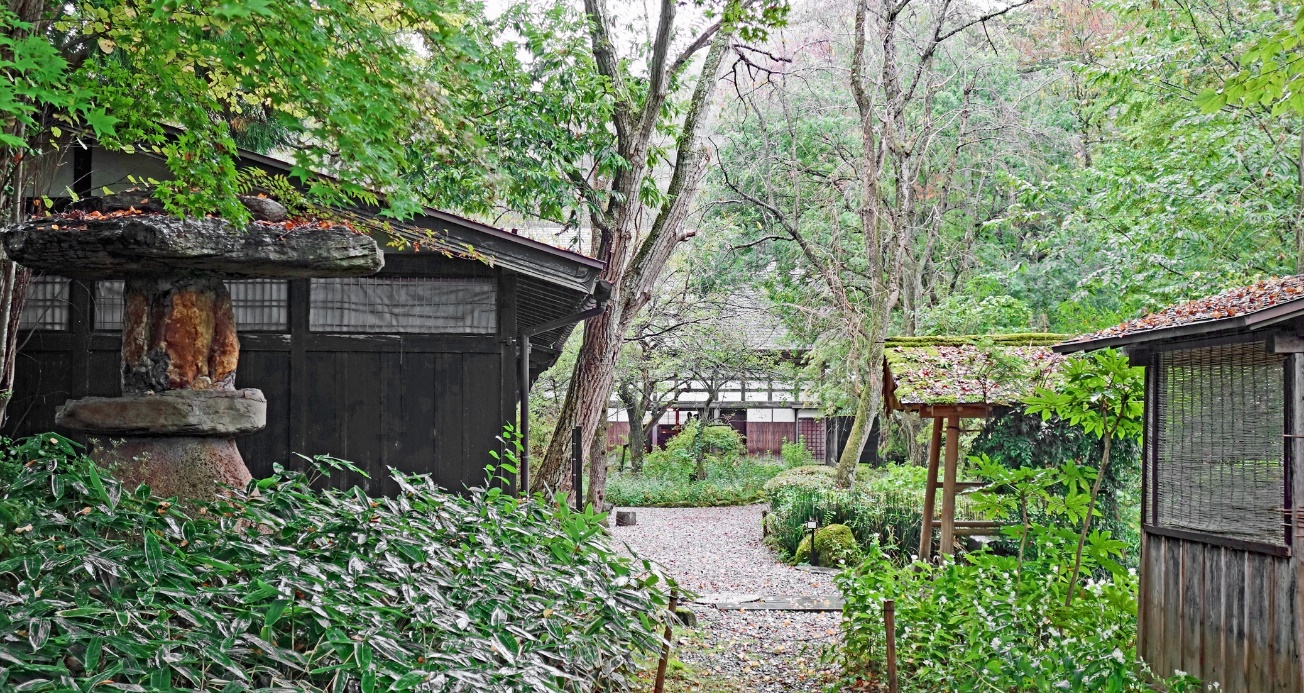
Merchant district.
To the south of the samurai district, a few historic merchant houses,
collectively referred to as the merchant district, are scattered among modern
buildings. They include the Nishinomiya and Ando houses.
The Nishinomiya house, one of the buildings in the compound of the prosperous Nichinomiya
merchant family.
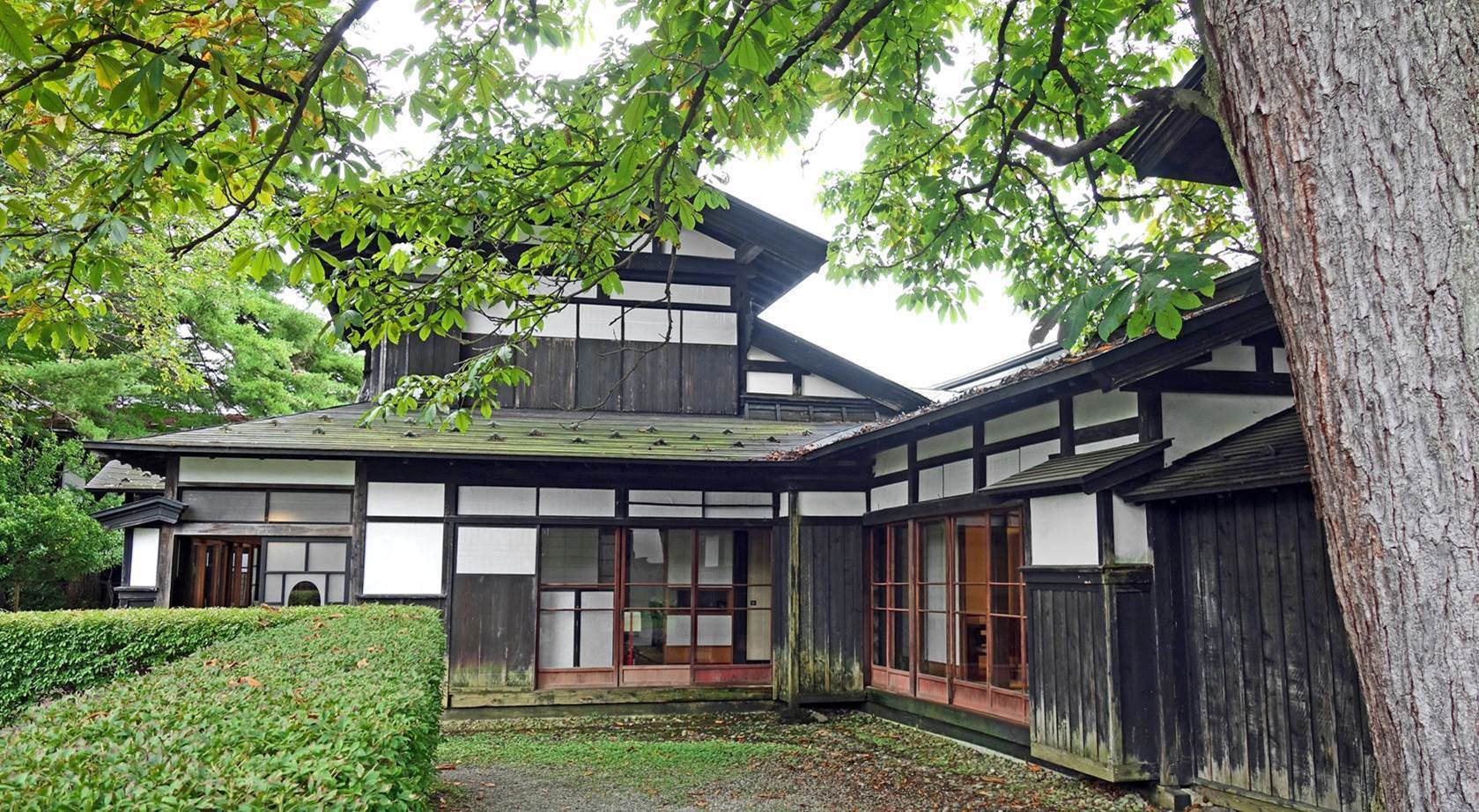
The Ando house, with its well-preserved red-brick storehouse (first photo
below) and its shop, still in operation and run by members of the Ando family
(next two photos). Particularly famous are miso, soy sauce, and pickles,
produced according to old recipes refined over time. The house has its own miso
fermentation factory.

|
|
Left: Arrangement of products and
decorations in the shop. Right: Ancestor shrine in a corner of the shop, with
old and recent photos of members of the Ando family.
Some other sights of Kakunodate.
Tenneiji temple and statues on the right side of the walkway leading to
the temple's prayer hall. This Buddhist temple was the family temple of the
Ashina family, who founded Kakunodate and ruled it for three generations before
being overthrown.
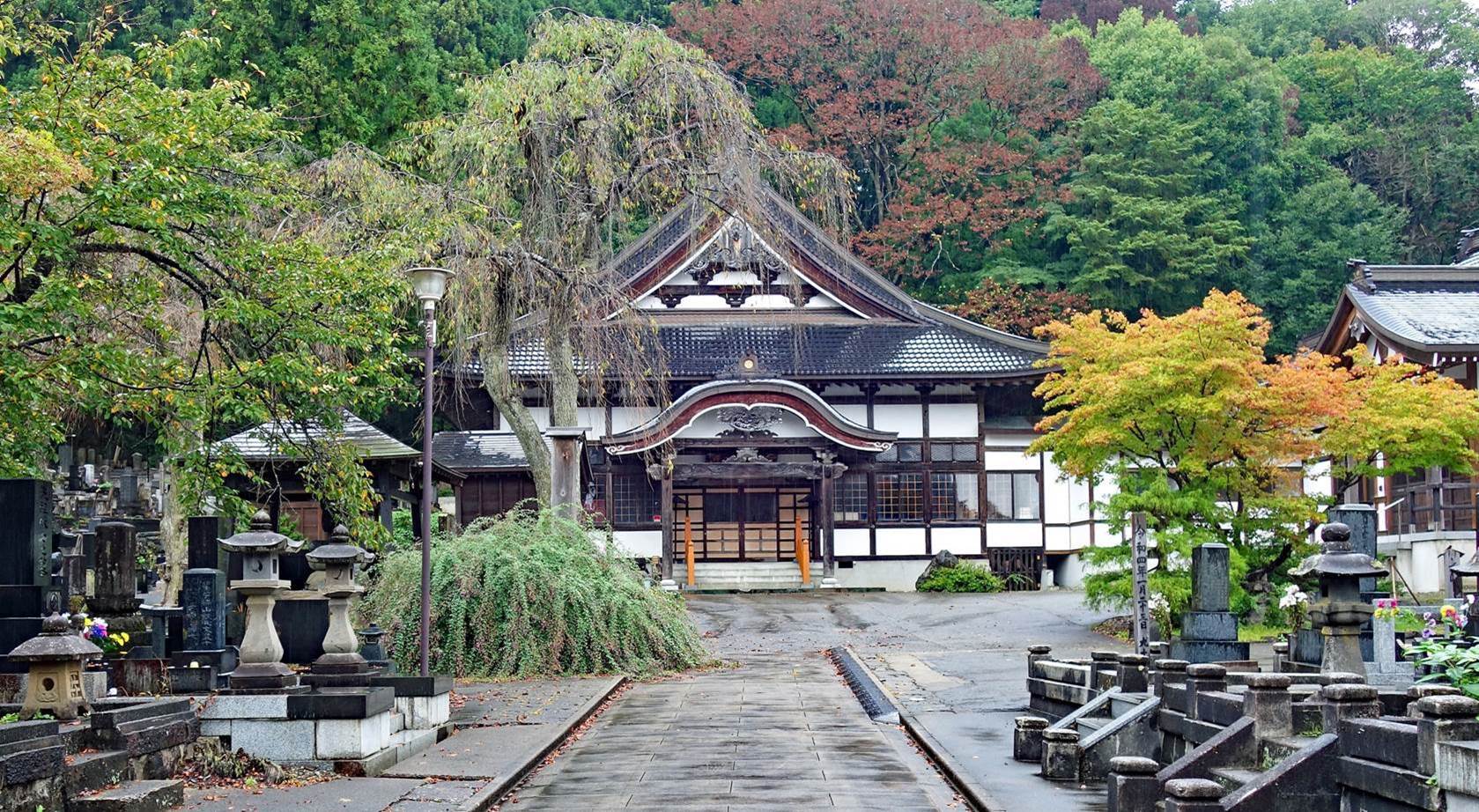
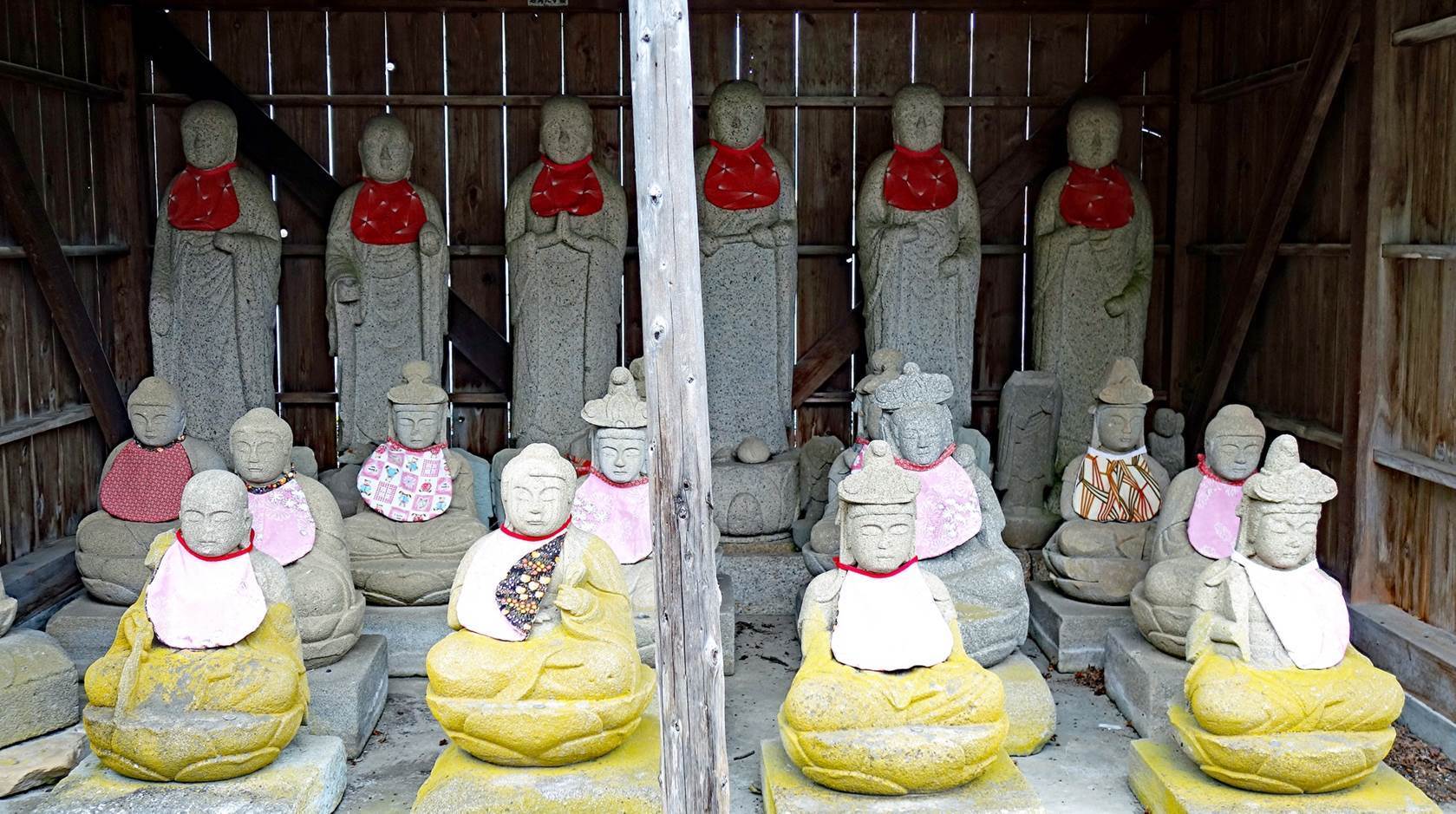
Shinmeisya shrine and its kazaridaru (decorated sake barrels). Shinmeisya is the
main Shinto shrine in the area.

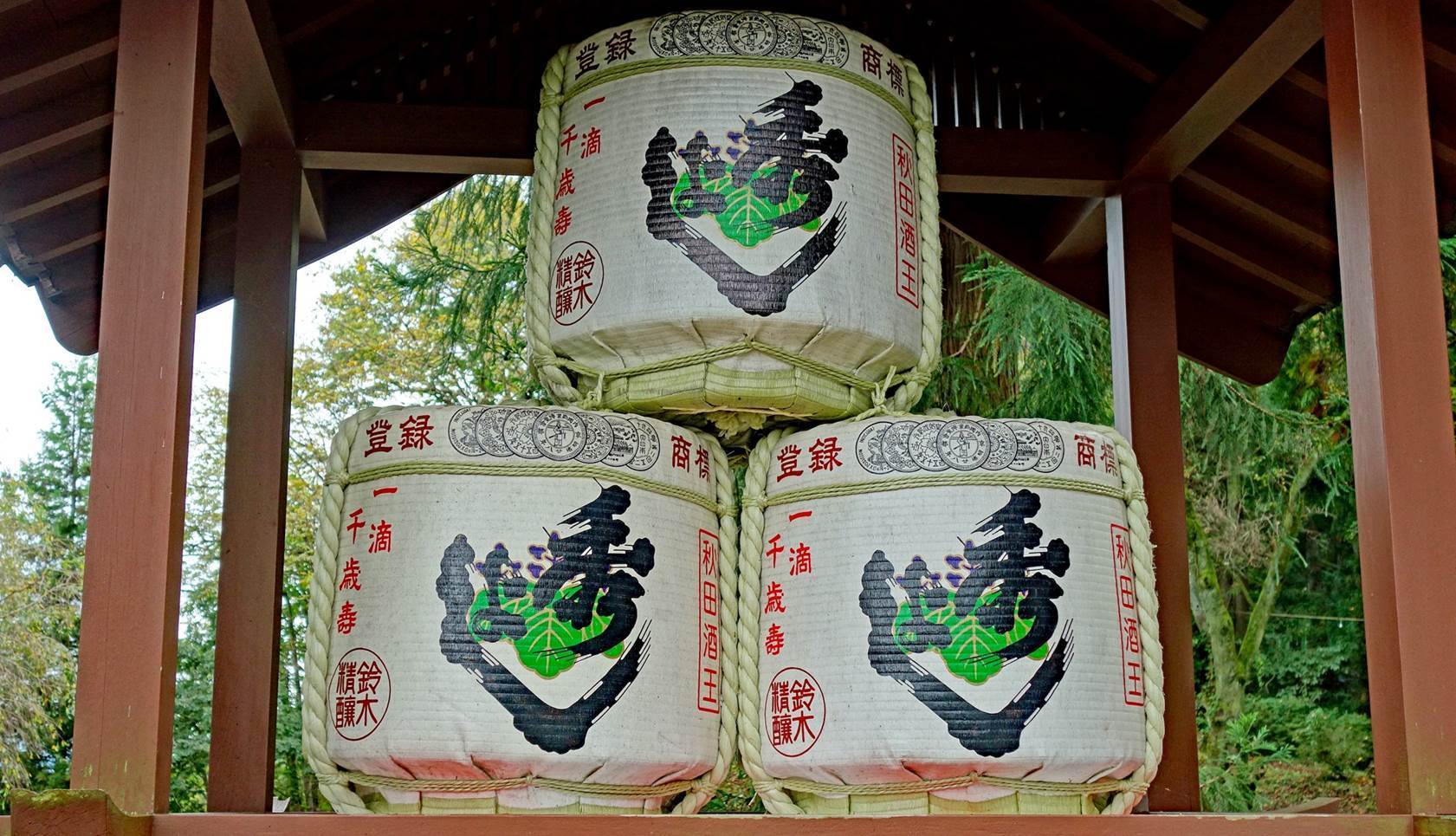
Eerie modern building of the Hirafuku Memorial Art Museum located at the
northern end of the samurai district.
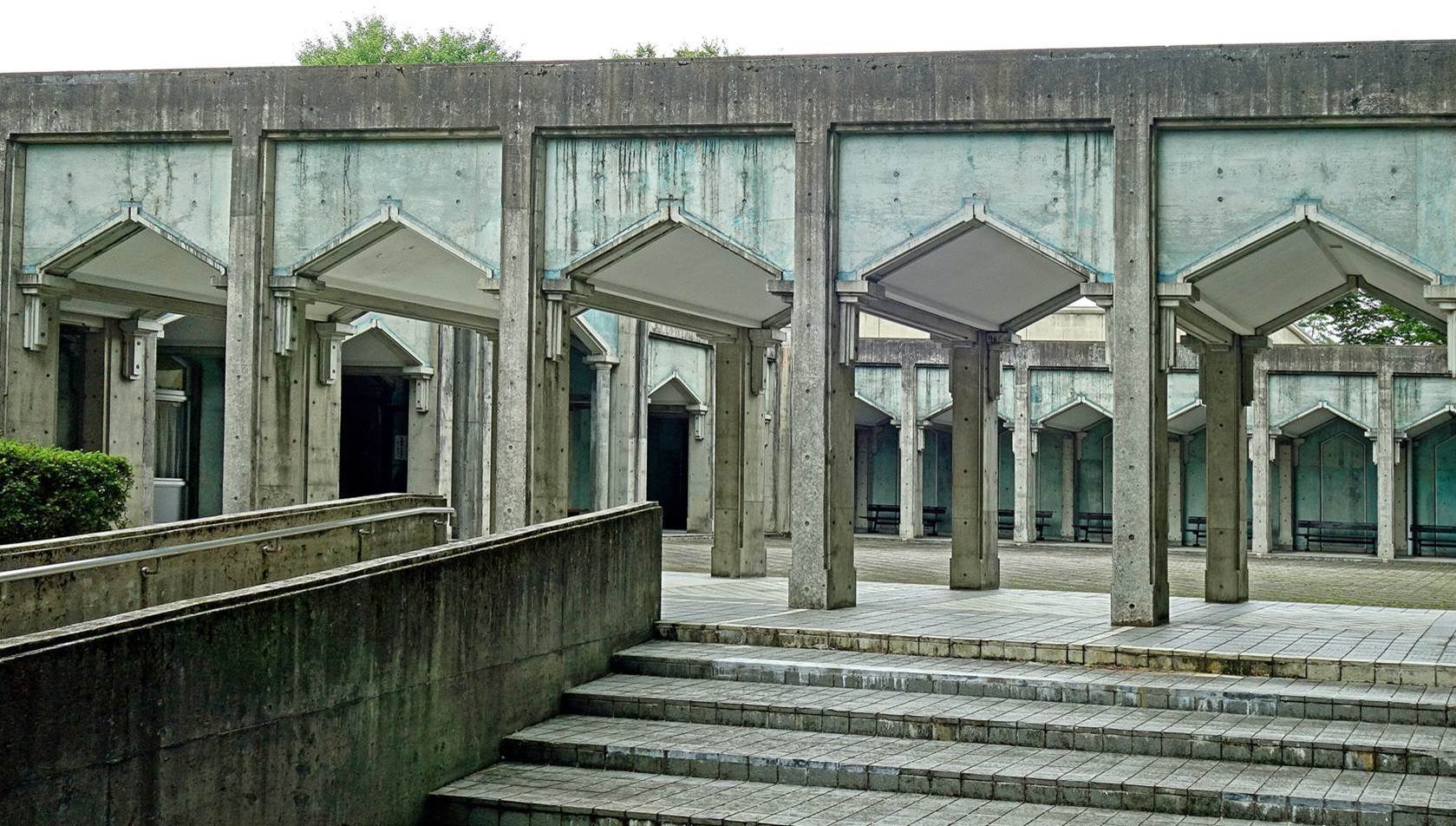
Cute facade of a private home.
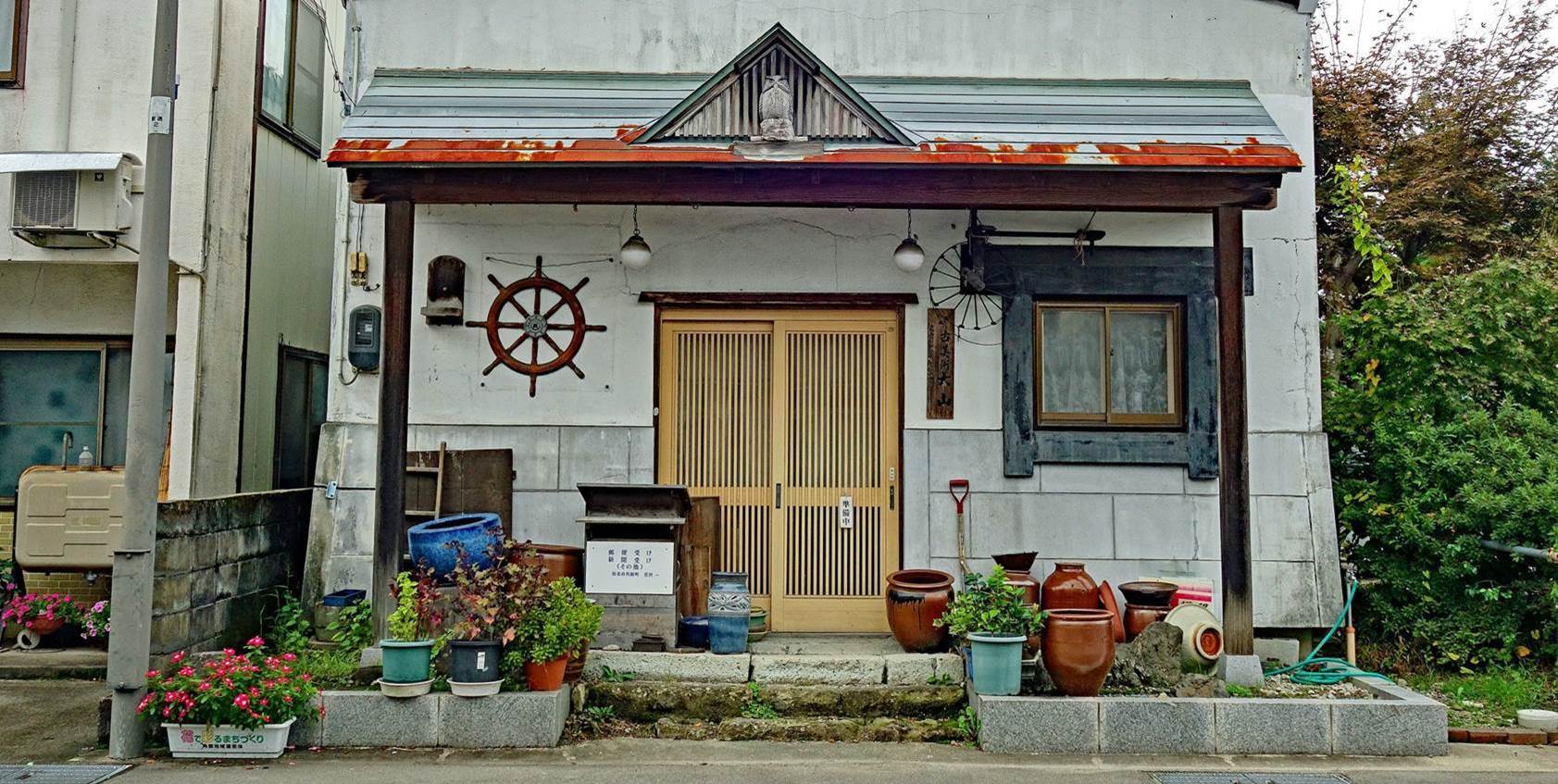
Part of a 2km trail along the Hinokinai river, west of Kakunodate. It is
lined on both sides with more than 400 weeping cherry trees believed to have
been planted in the mid-17th century. In late April and early May, it is a very
popular place to enjoy ″hanami″ (cherry blossom).
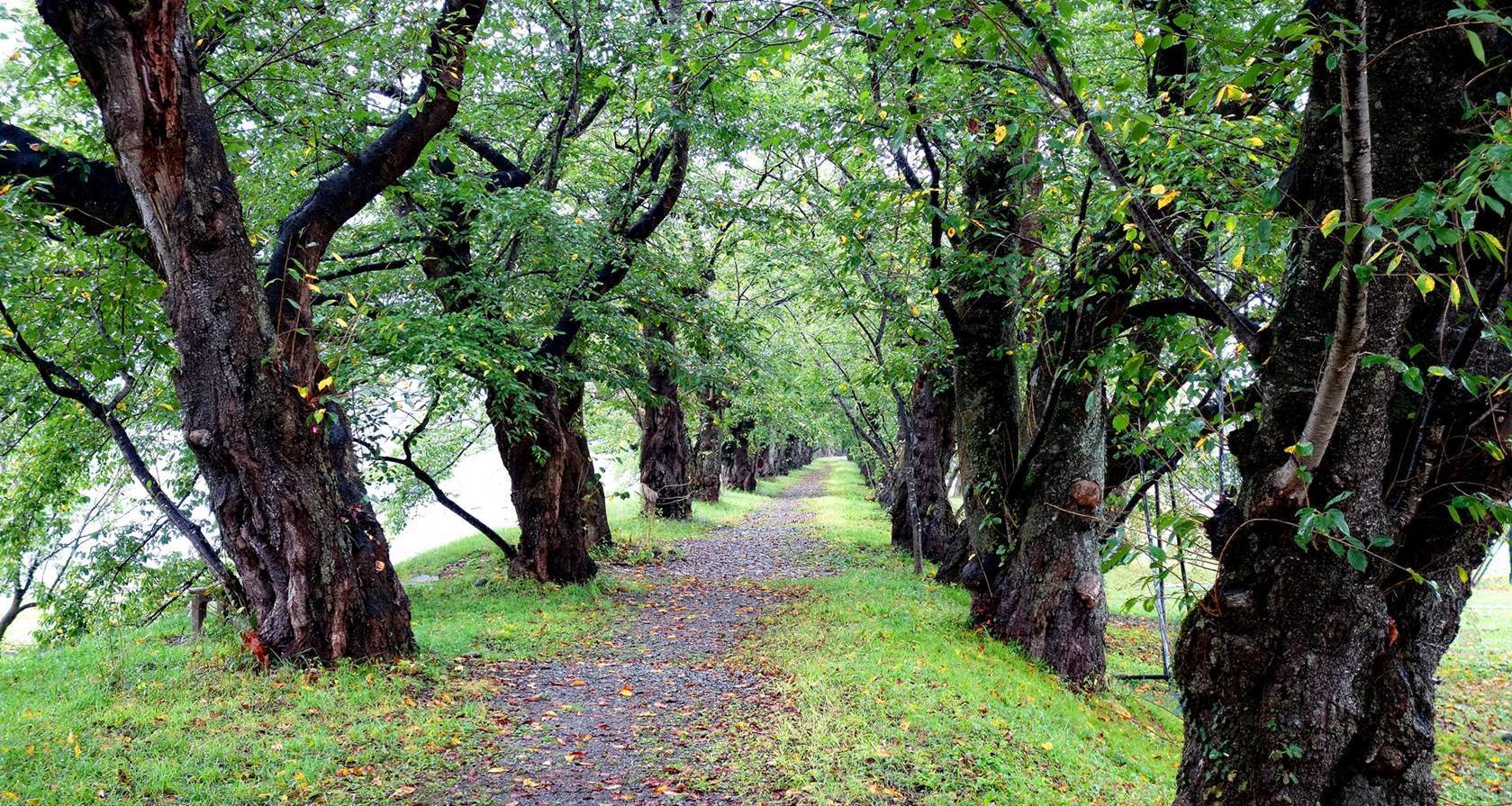
Kuroyu onsen
In the mountains
30km northeast of Kakunodate, there is an ensemble of seven onsens,
collectively called Nyuto onsens, some 200 to 300 years old and quite spartan.
Kuroyo onsen is one of the oldest among them. It consists of several buildings
surrounded by small pools of bubbling hot mud and mountain slopes spewing
steaming water.
Views of the
Sendatsu river (first photo below), the main local river, and of one of its
tributaries (next two photos). Kuroyo onsen is located next to the confluence
of these two rivers.
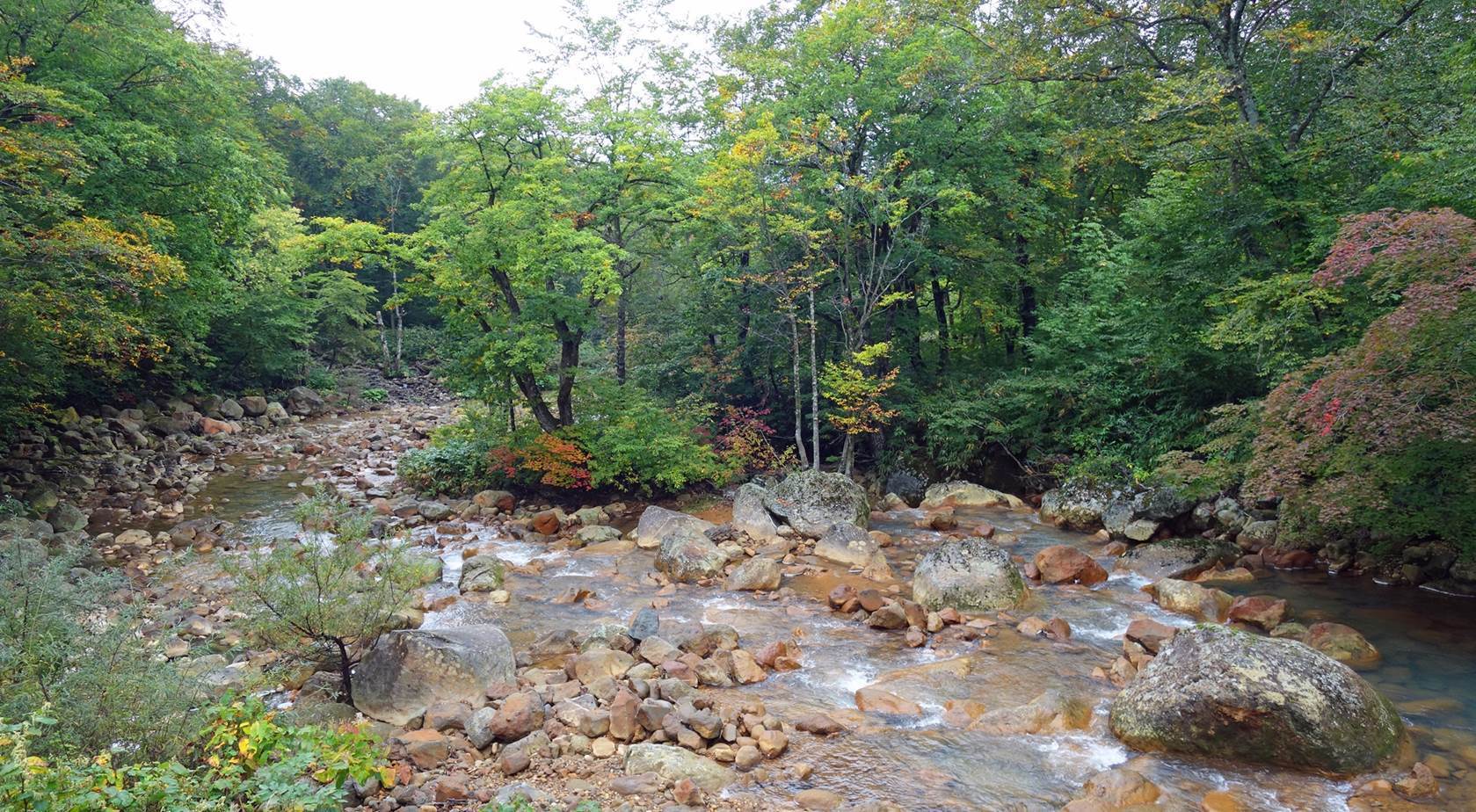
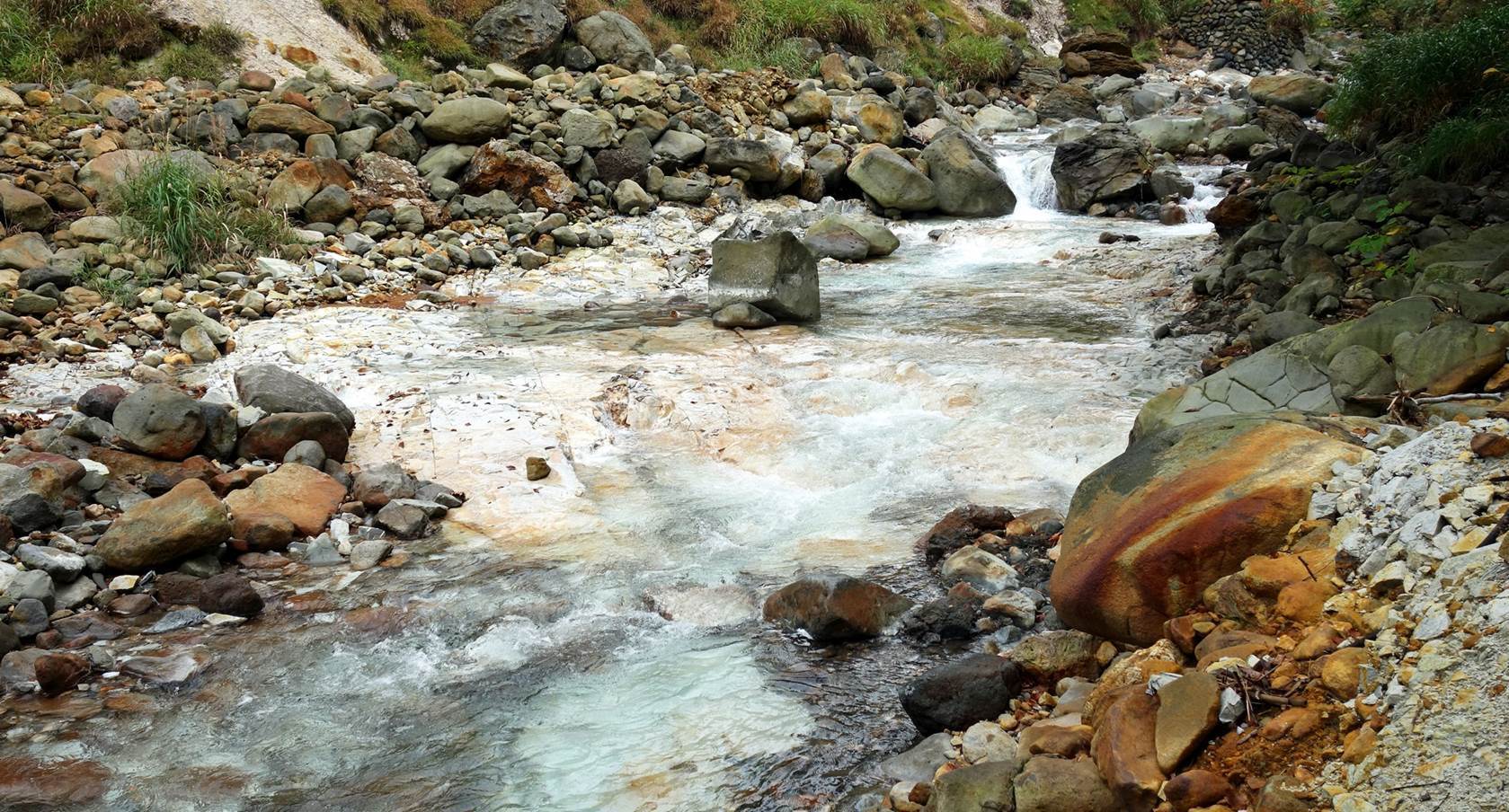

Buildings of Kuroyu onsen. Note the thick thatched roofs of some of them.
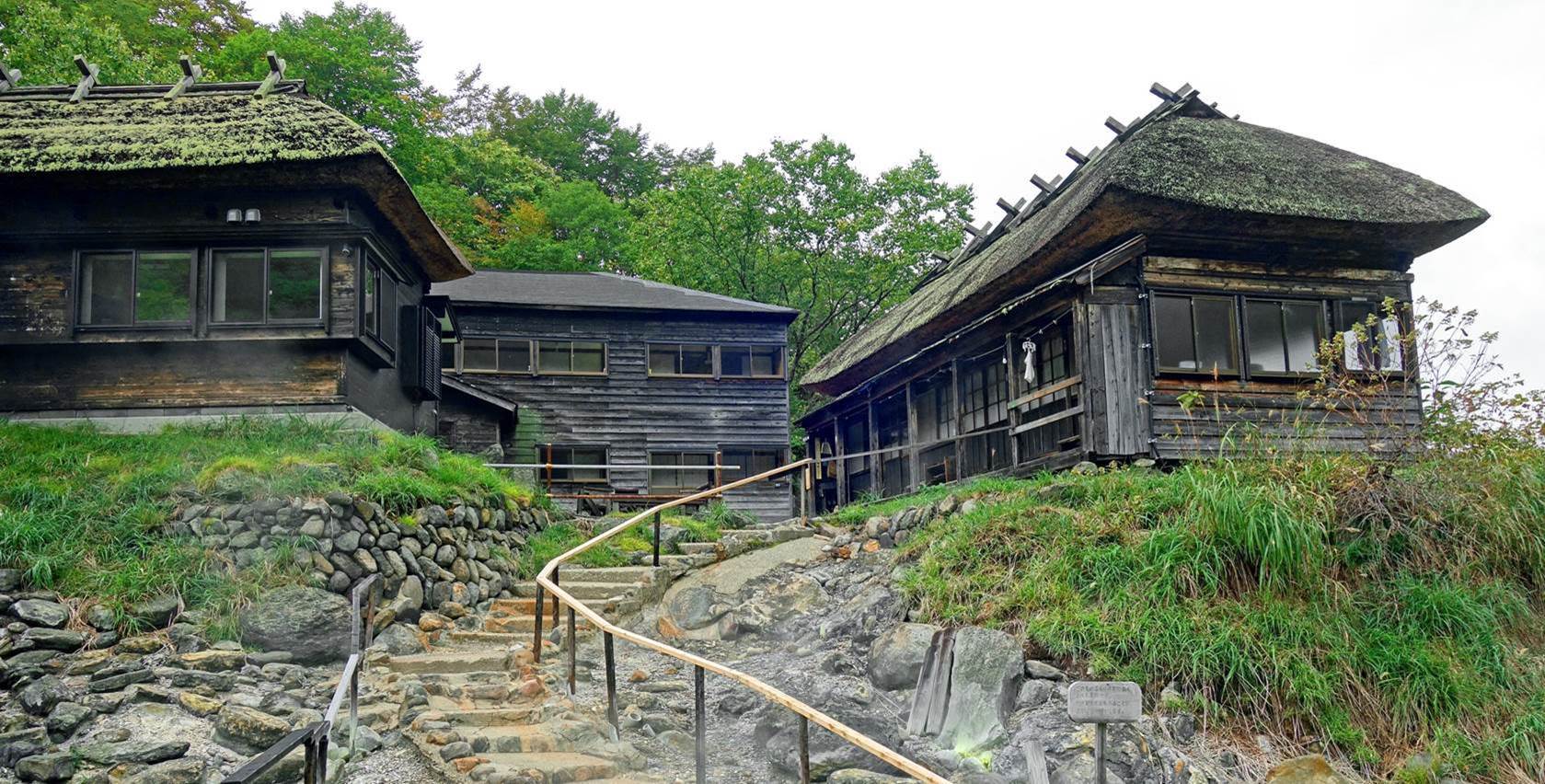
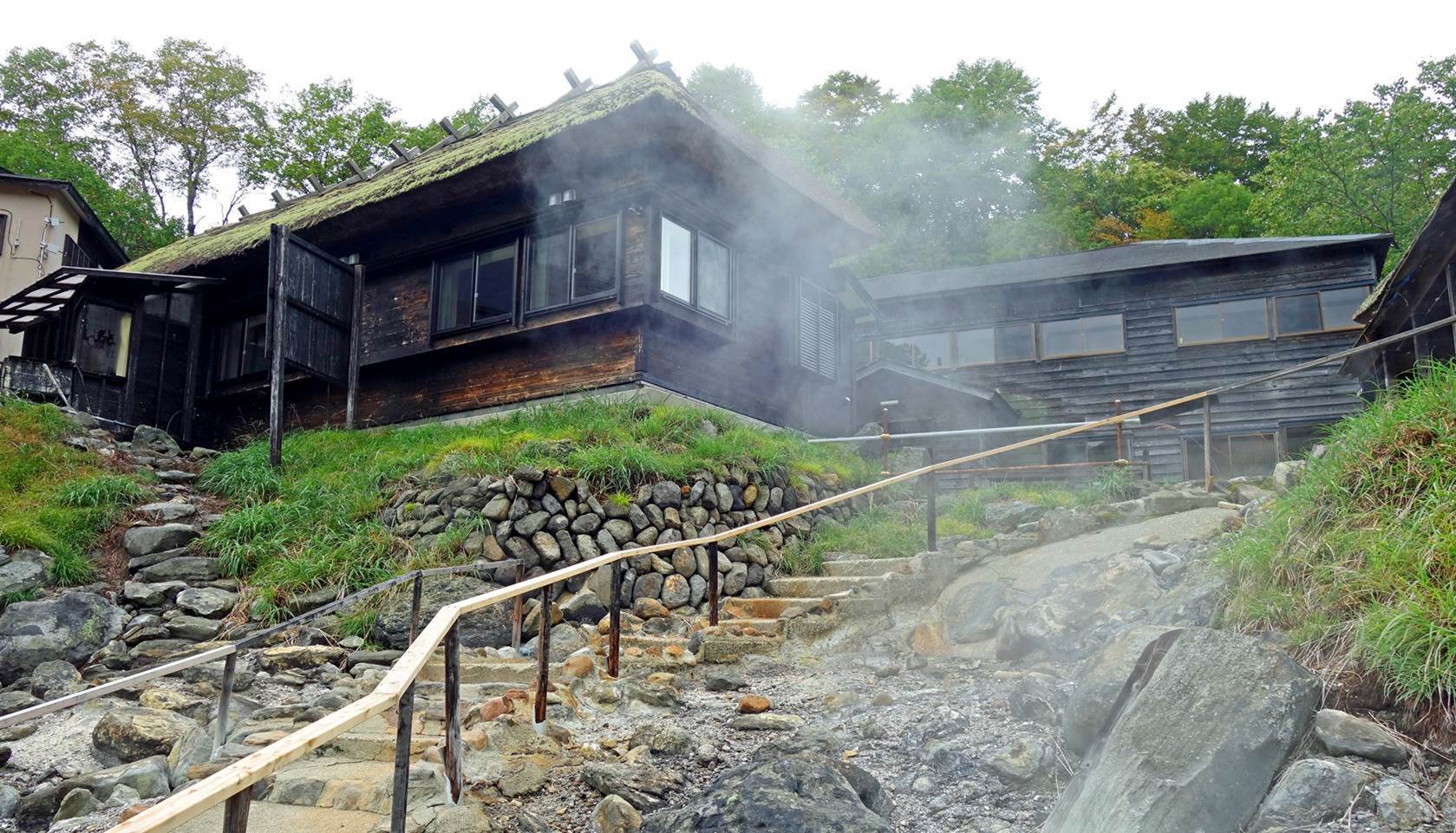
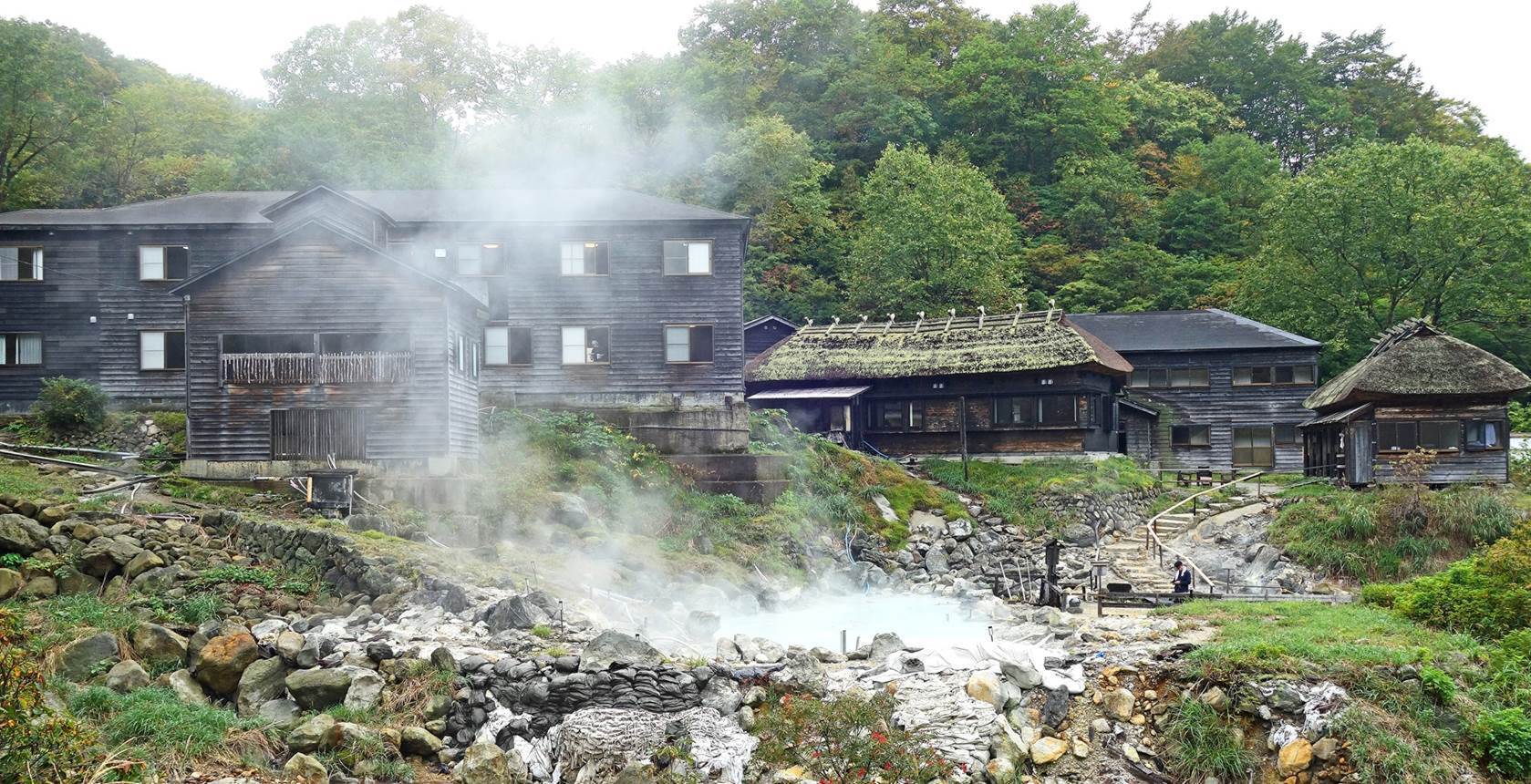
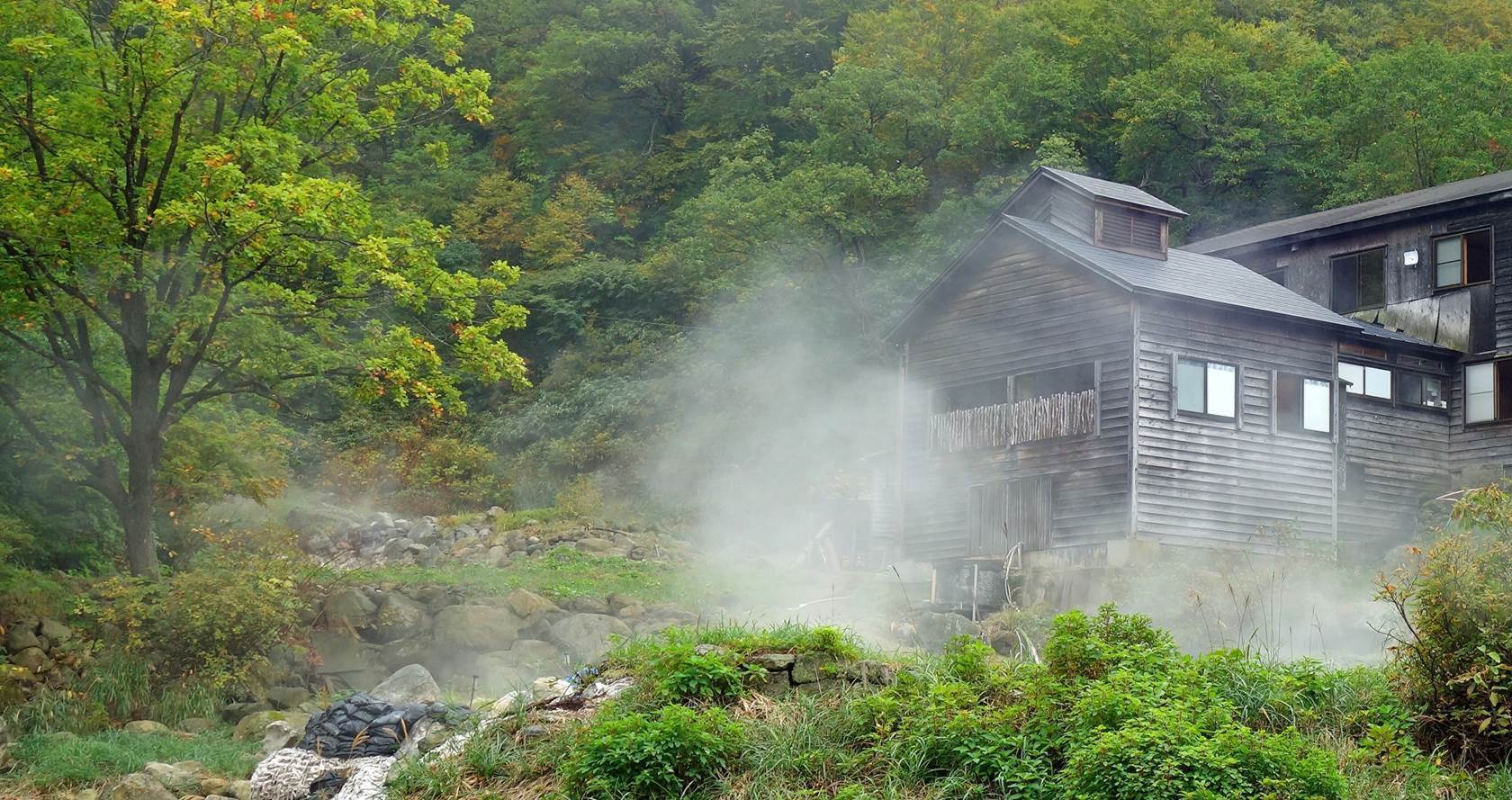
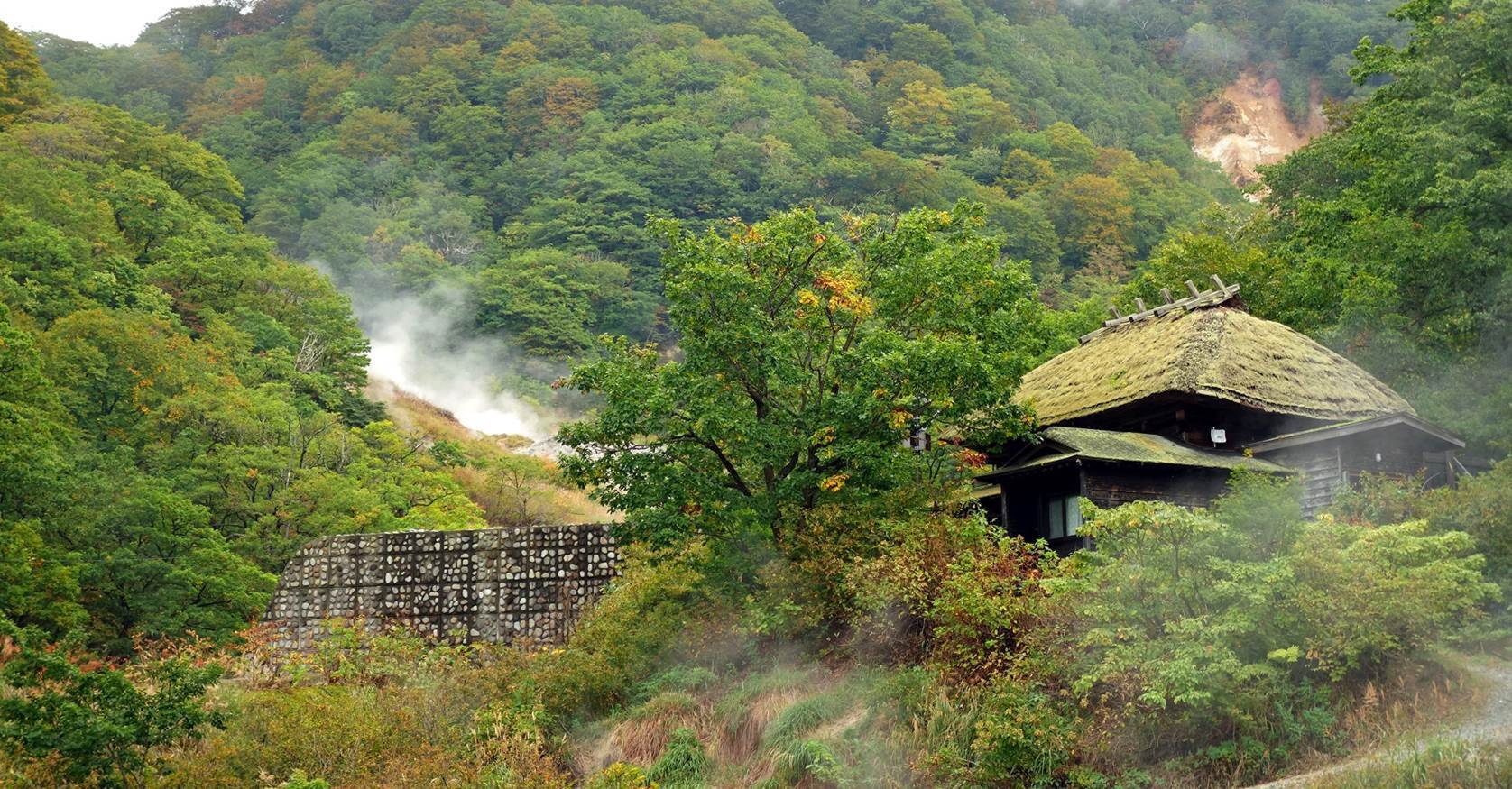
Pools of hot mud.
|
|
|
Steaming vents on a mountain slope above the onsen.
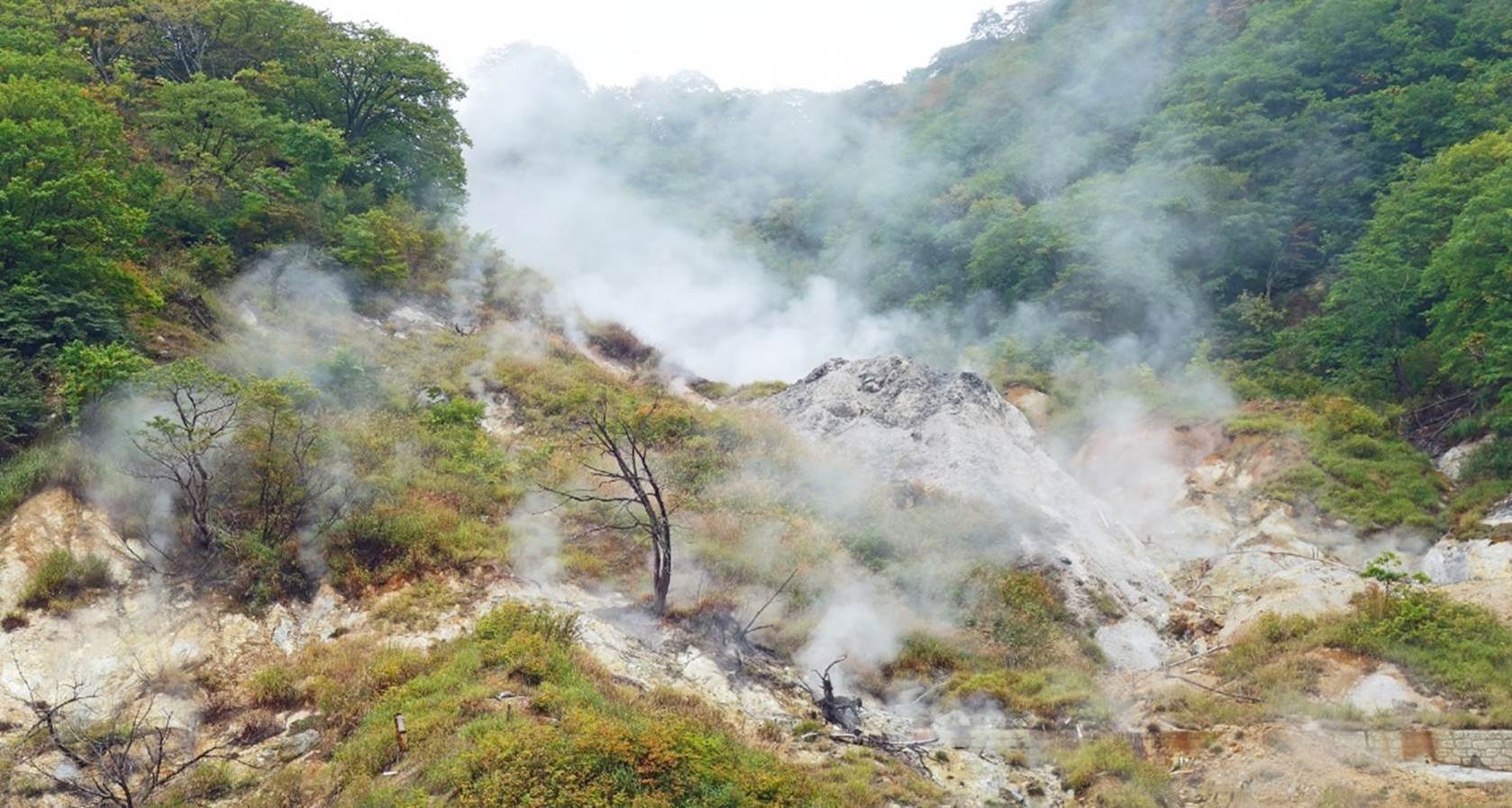
Akita
Akita is the capital of the eponymous prefecture. The city began to
develop in the early Edo period under the leadership of Satake Yoshinobu (1570-1633),
the first Satake lord of the Kubota domain (see top of this page). Yoshinobu
built the Kubota castle in 1603 on Shinmei Hill, now Senshu Park. There is
almost nothing left of it today. However, two major structures, its main gate
(Ichinomon) and one of its eight turrets (Osumi-yagura), were rebuilt recently
based on historical records. In addition to these two structures, Senshu Park
includes pretty gardens, Shinto shrines, and a statue of Satake Yoshinobu.
I only stopped briefly in Akita on my way from Kakunodate to Sakata.
Facade of a sake brewery near the Akita station.
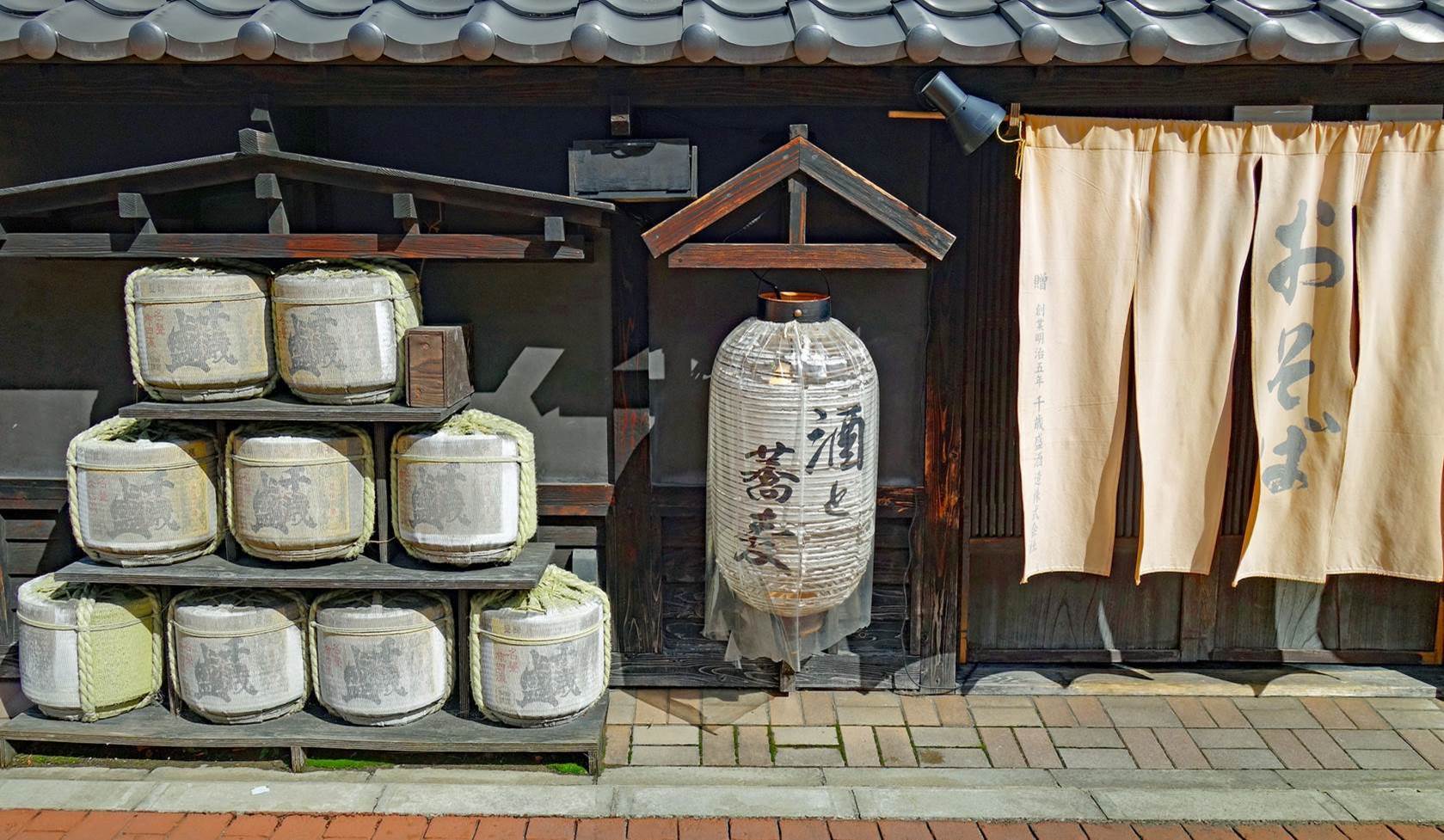
The Ichinomon, the main gate of the former Kubota castle, reconstructed
in 2001 on its spot in Senshu Park.
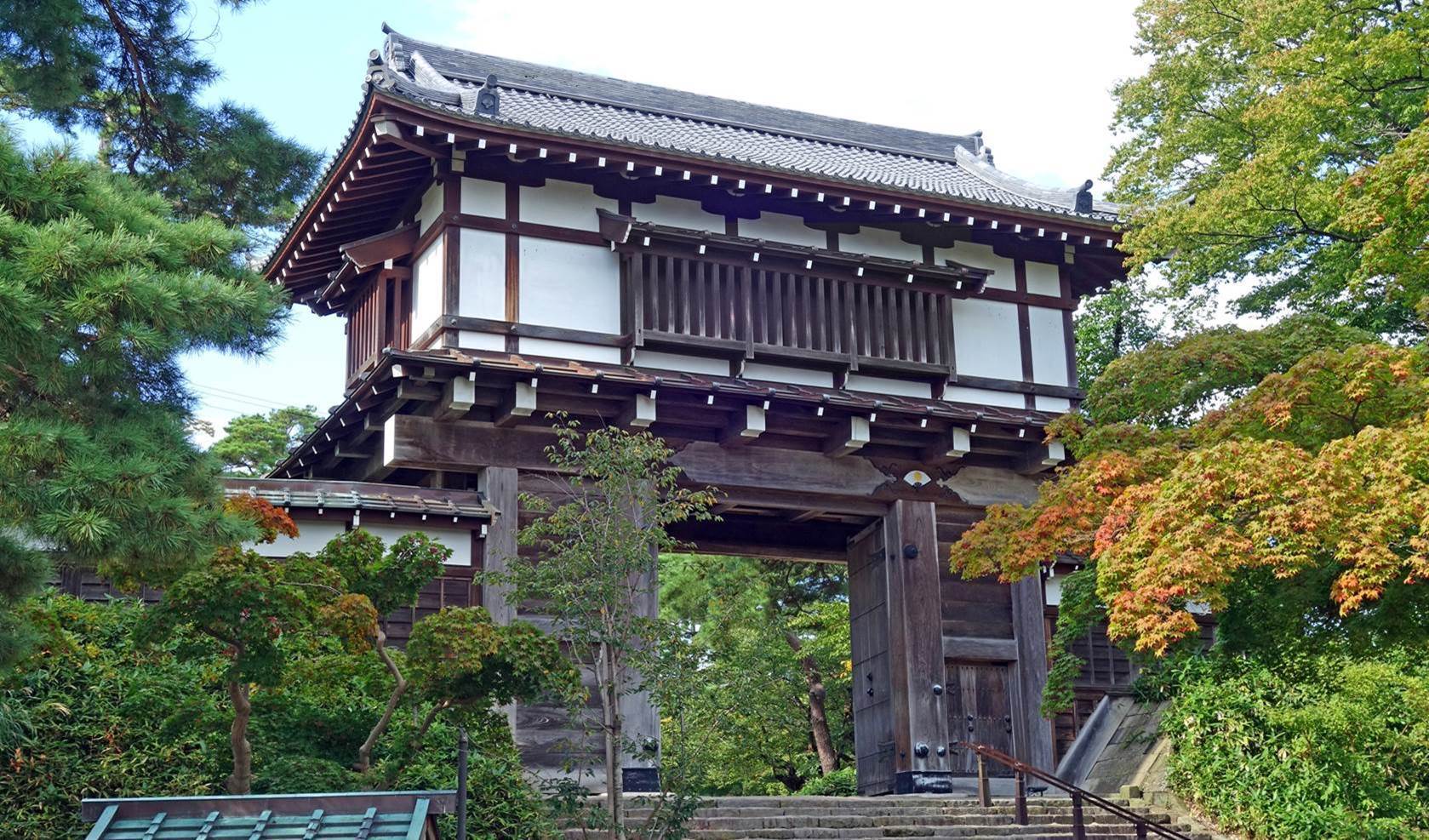
Left: Statue of Satake Yoshinobu, near the Ichinomon. Right: The
Osumi-yagura, the turret rebuilt in 1989 at its original location on the
northwest corner of Senshu Park.
|
|
|
Iyataka shrine (Shinto).
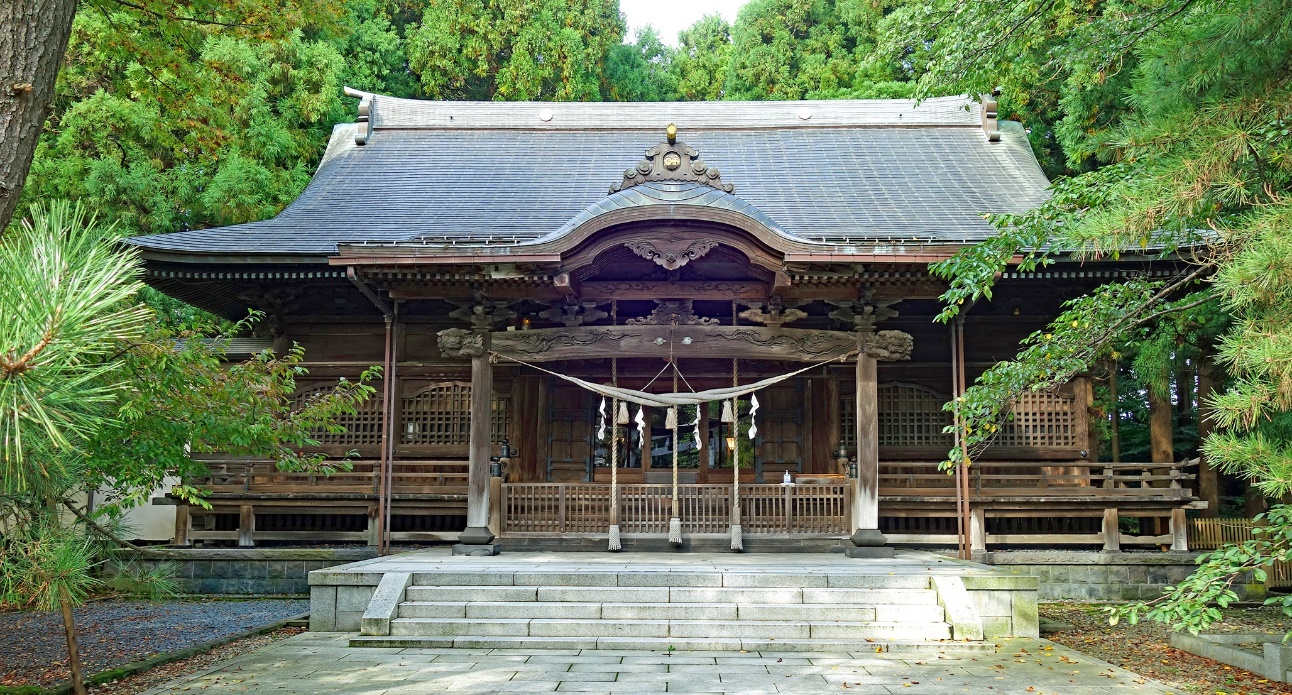
Alignment of foxes next to a row of torii at Yojiro Inari shrine. (Inari
is a popular Shinto kami associated with foxes.)
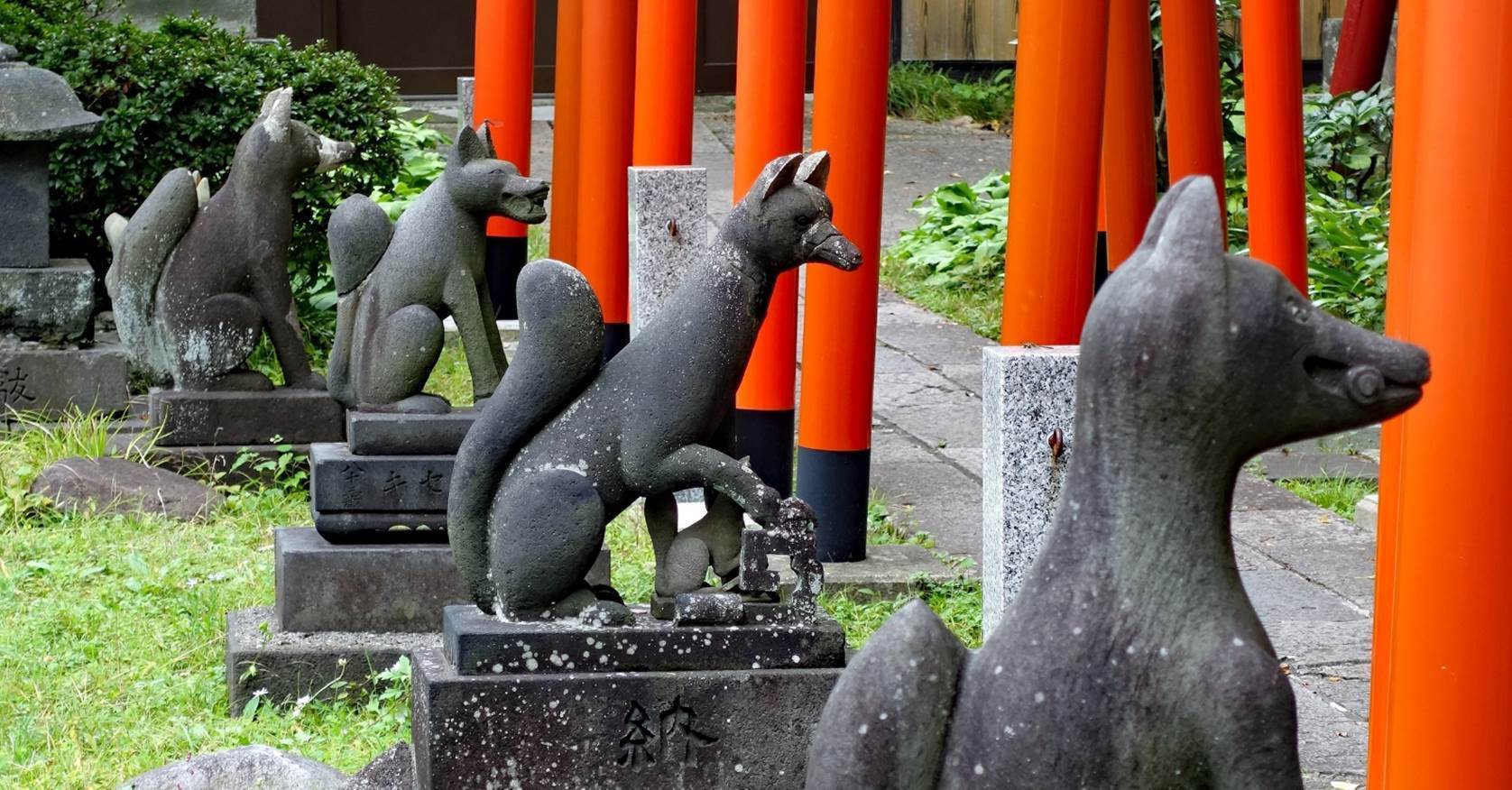
Small secluded garden next to a traditional tearoom in Senshu Park. The
boat-shaped wash basin visible at the bottom right of the photo is said to have
been brought back by Kato Kiyomasa following the invasion of Korea in the late
16th century. Kiyomasa was one of the three senior commanders during the
Seven-Year War (1592-1598) against the Korean Joseon kingdom.
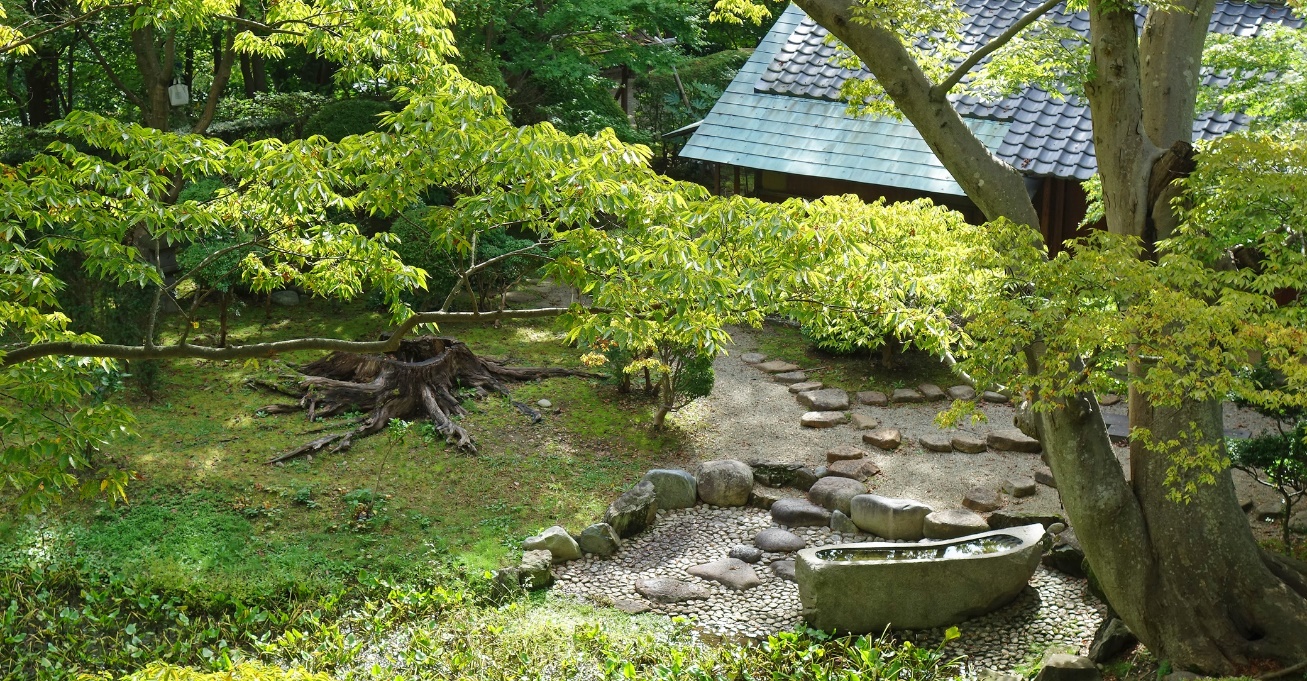
![]()


